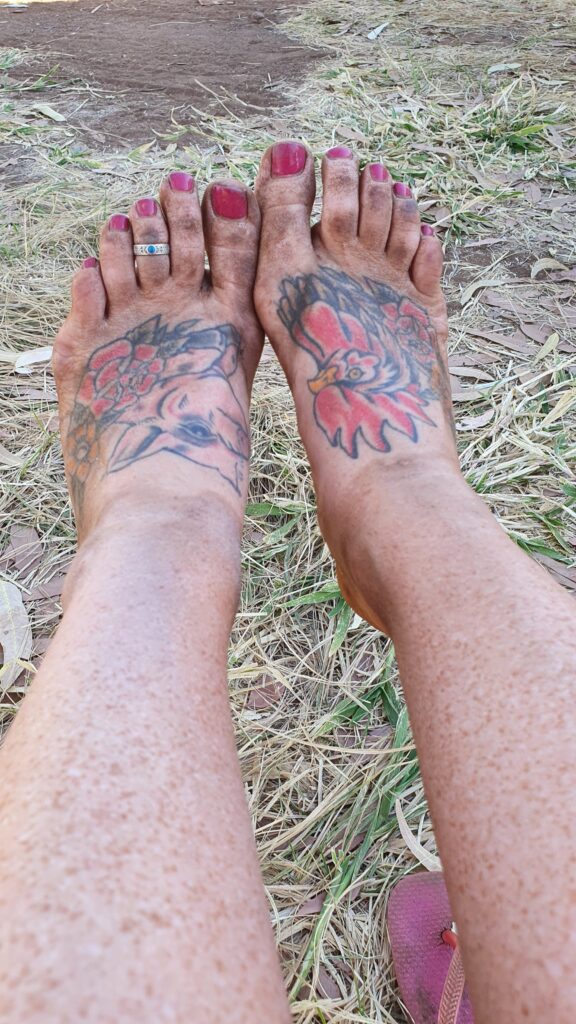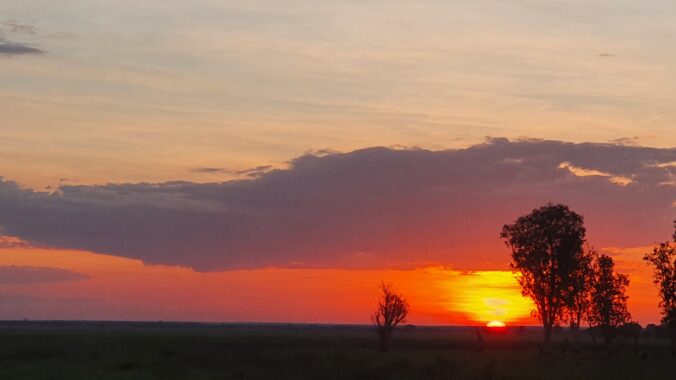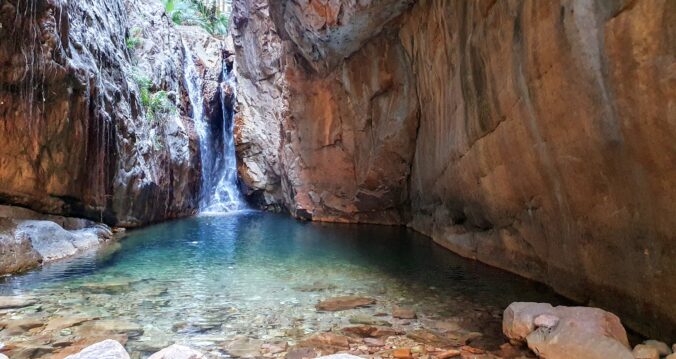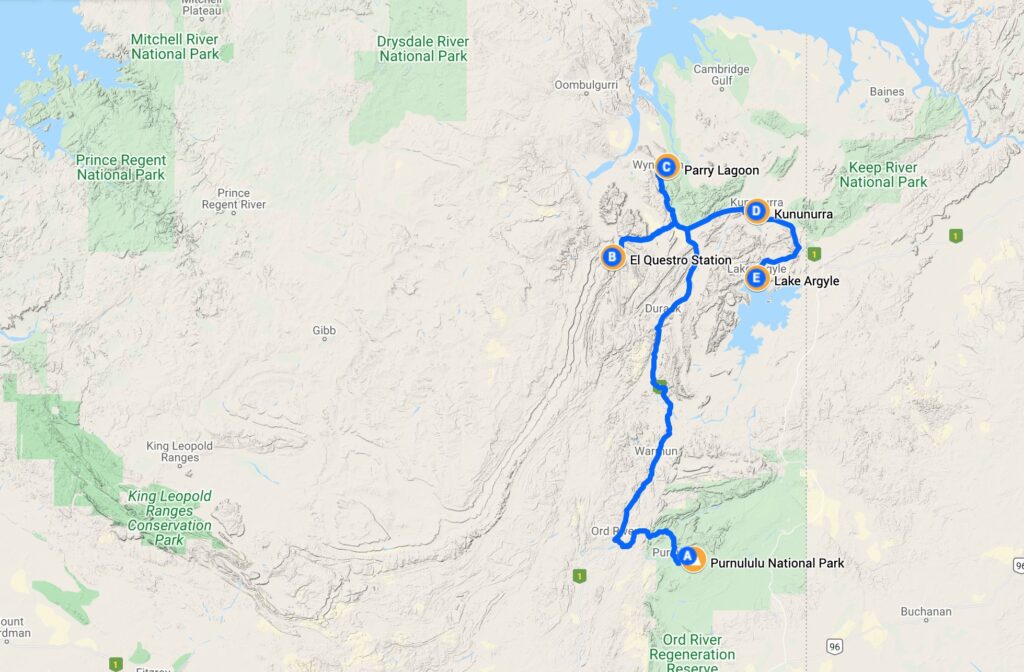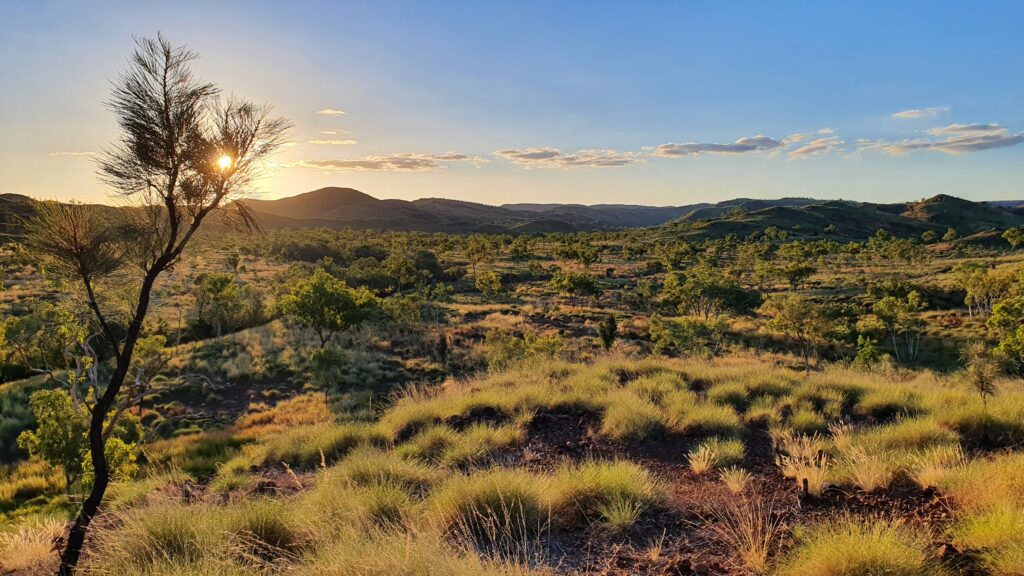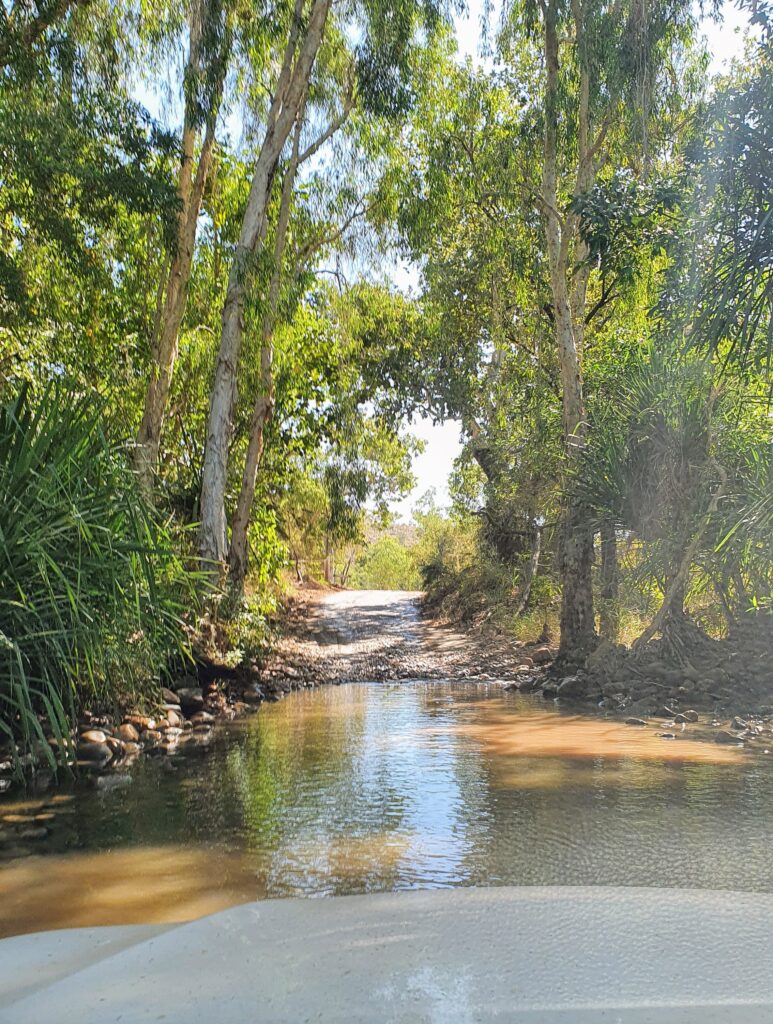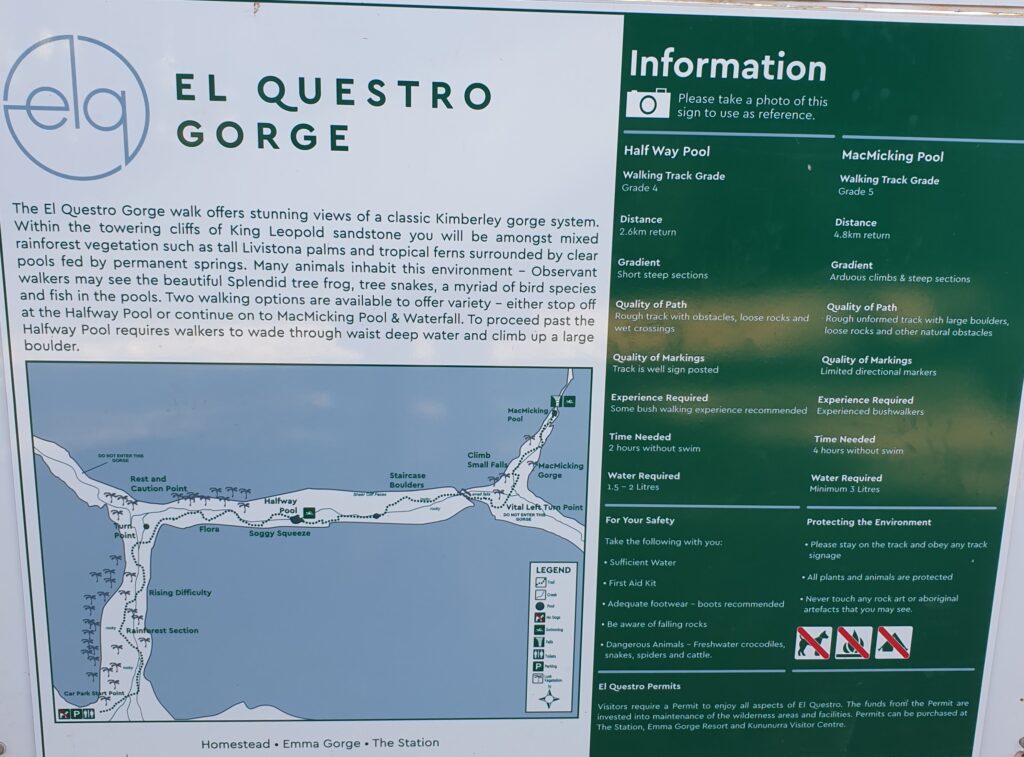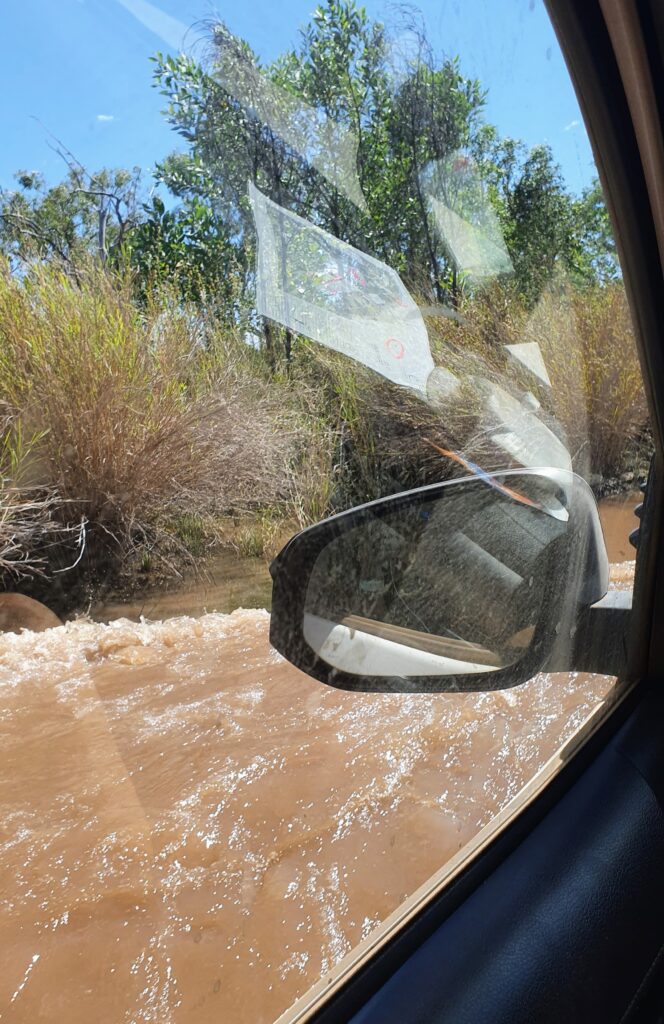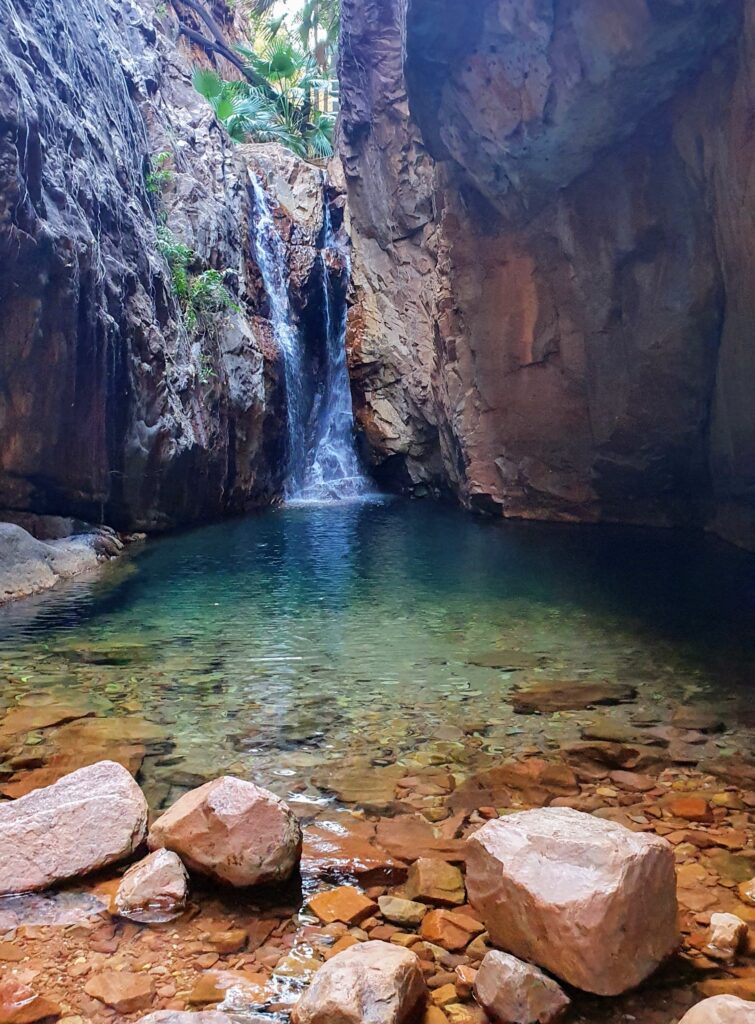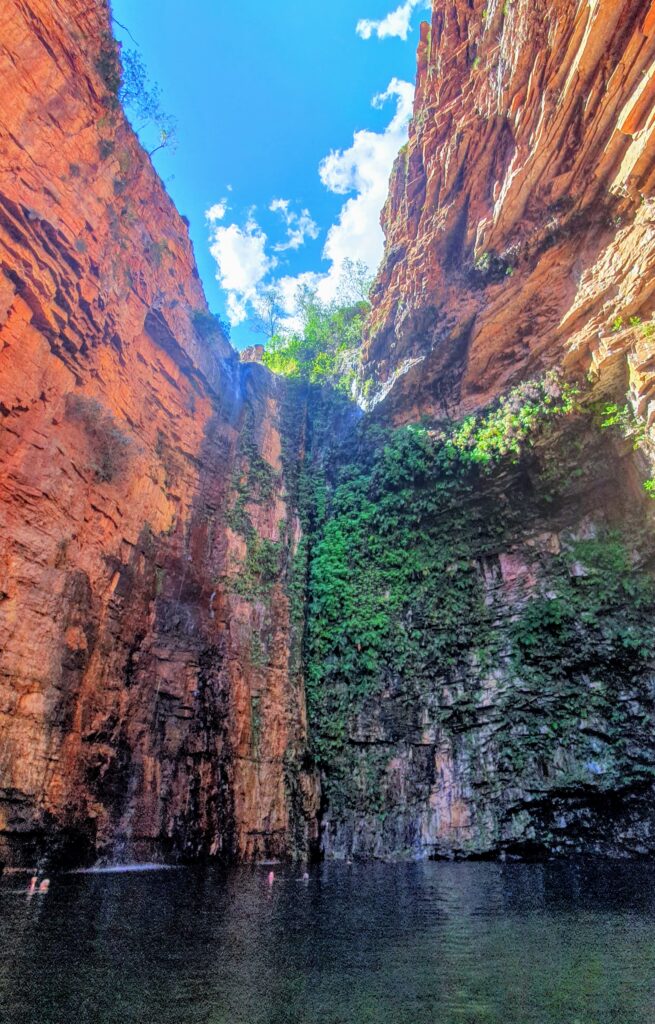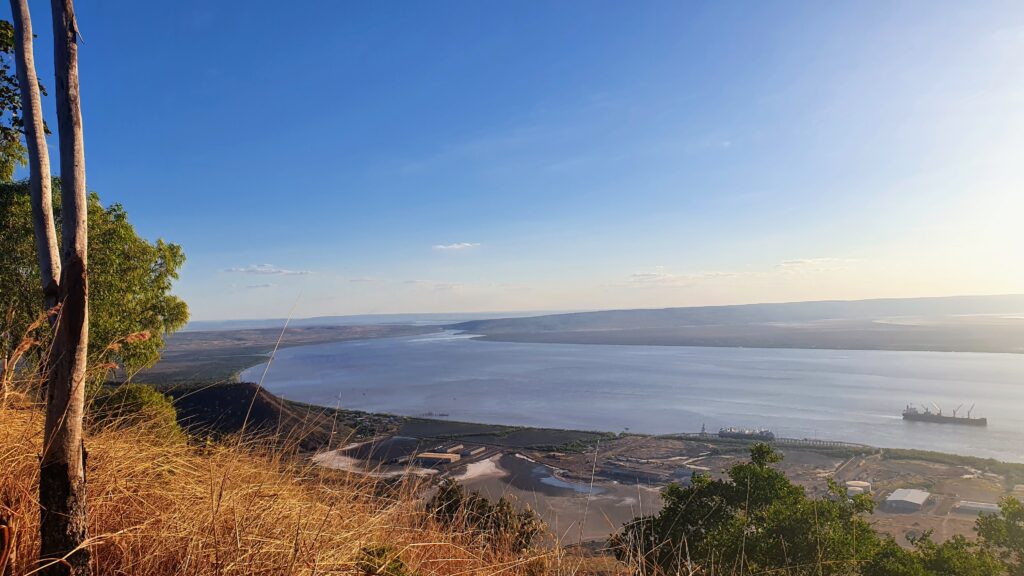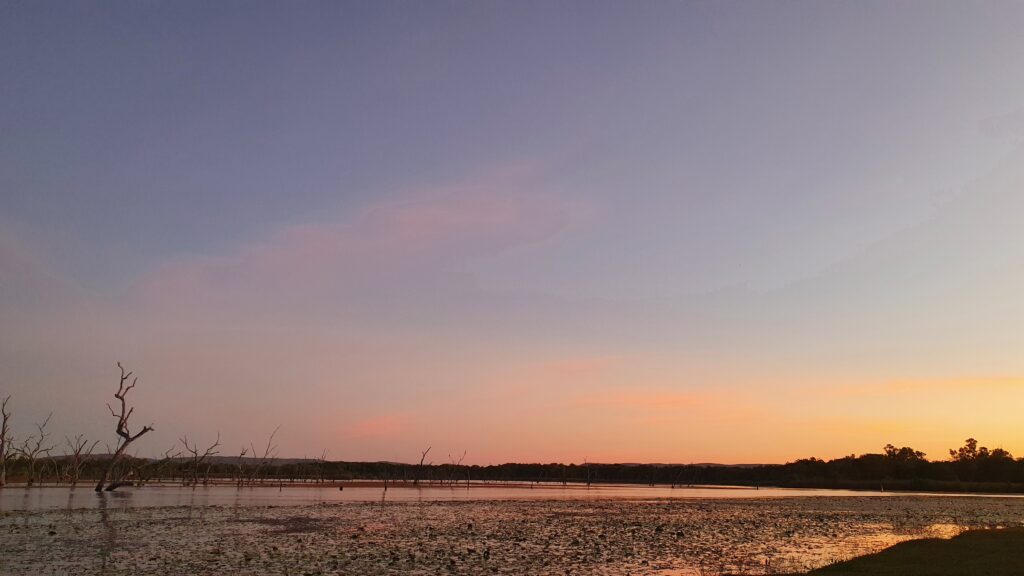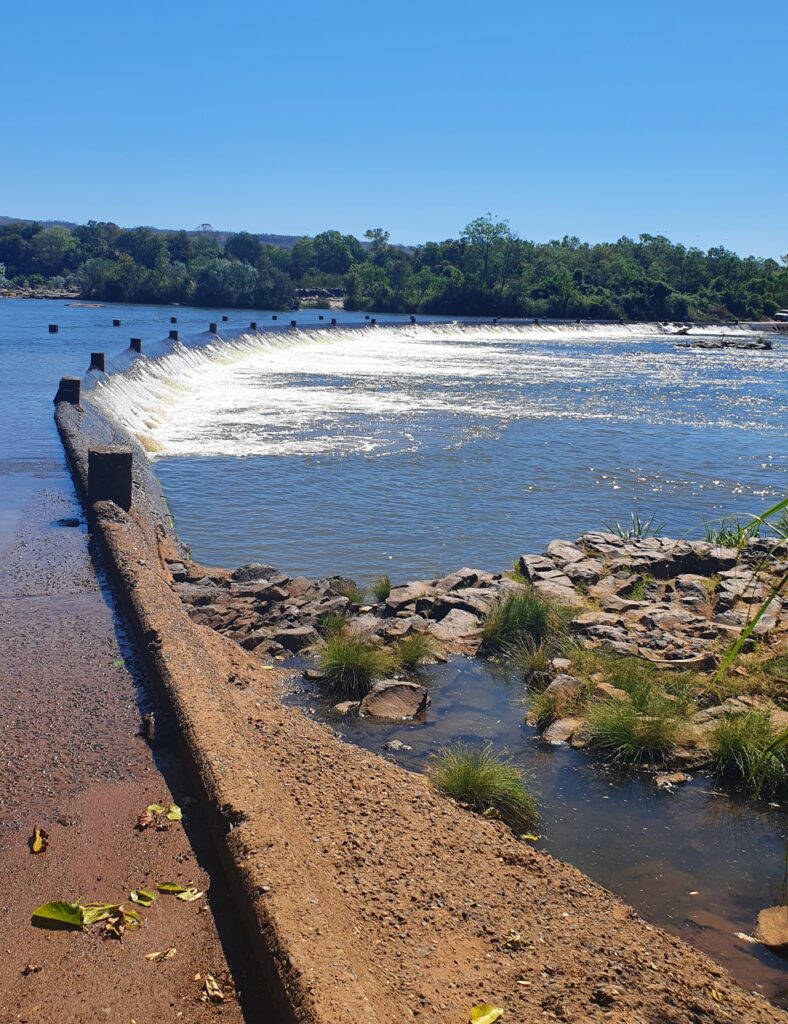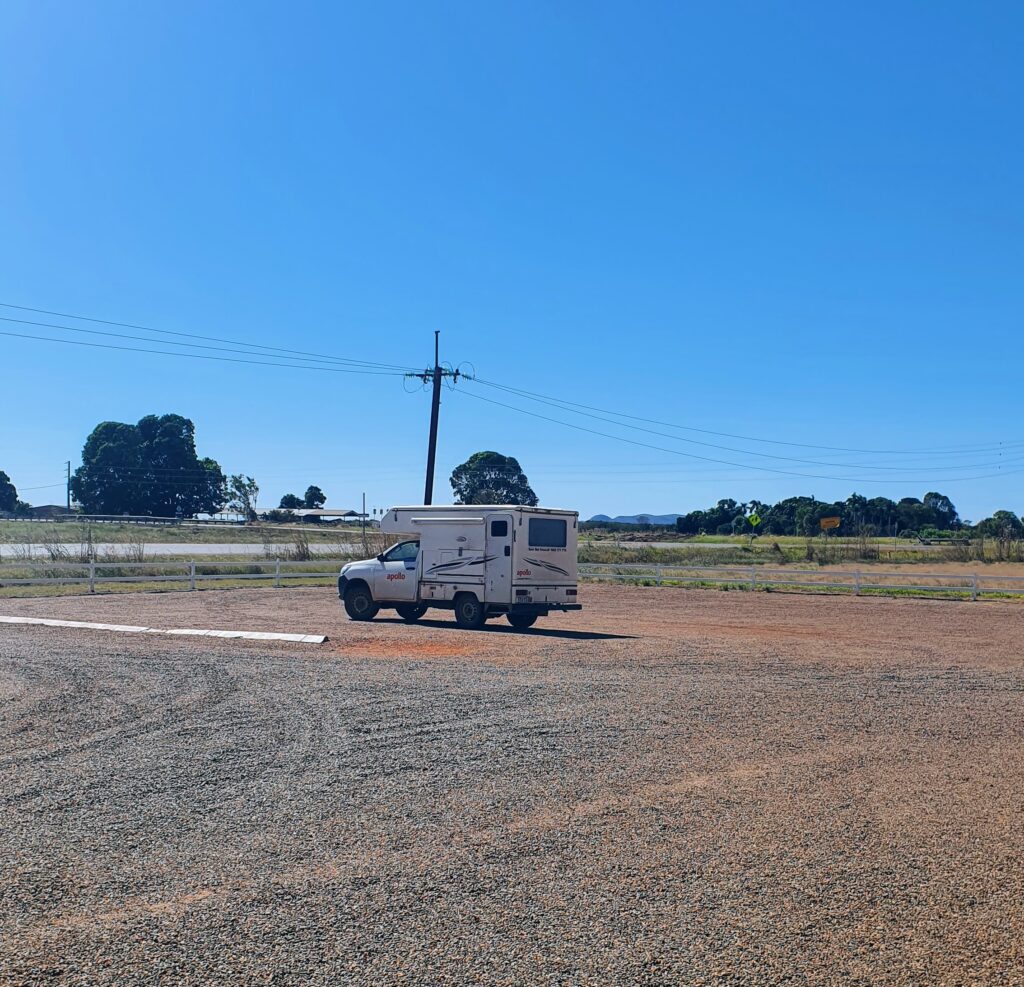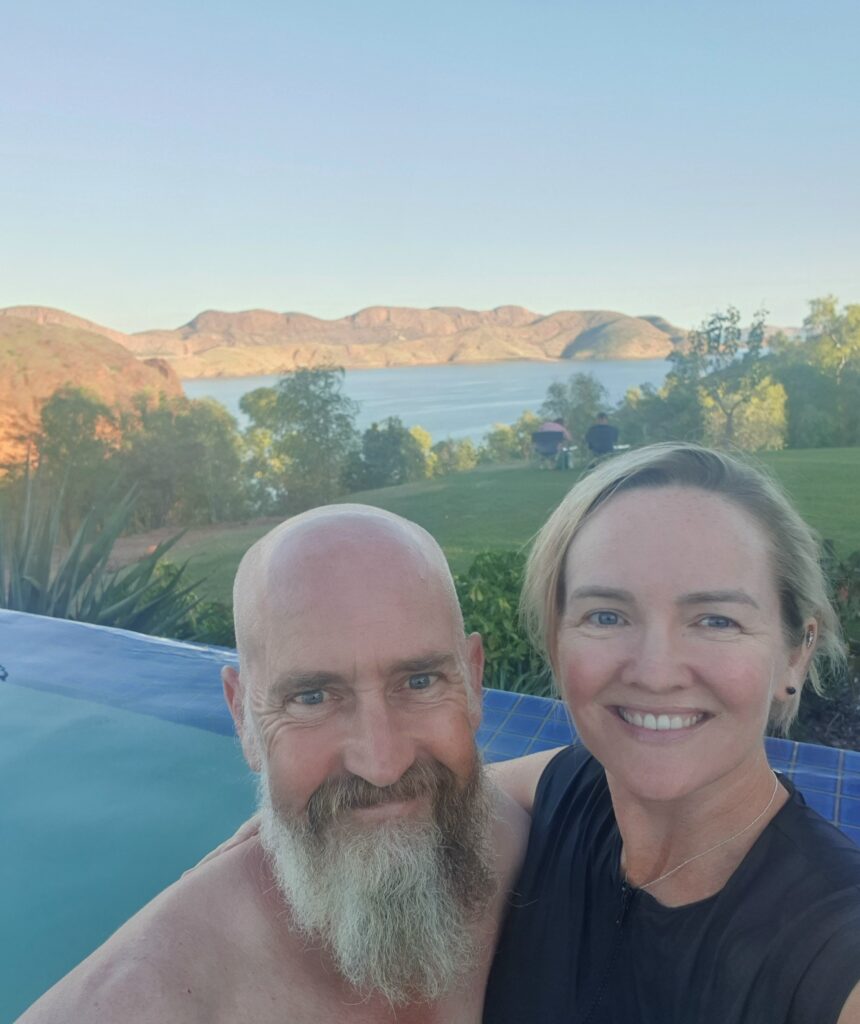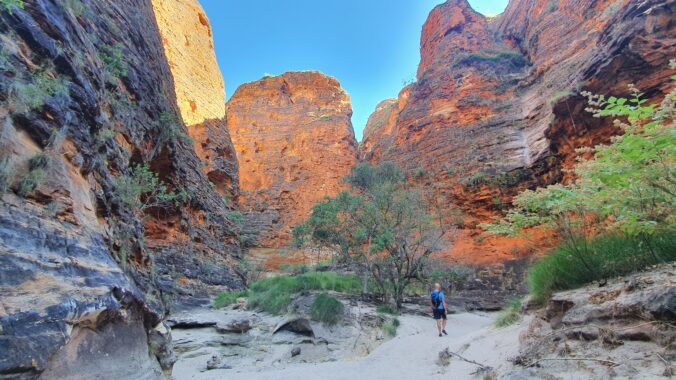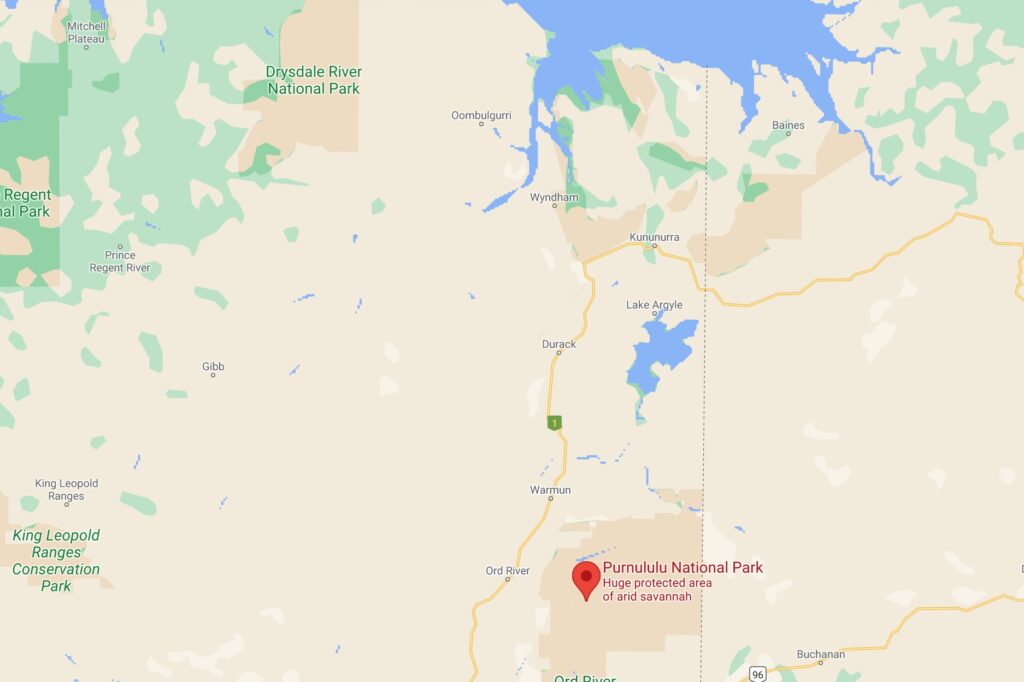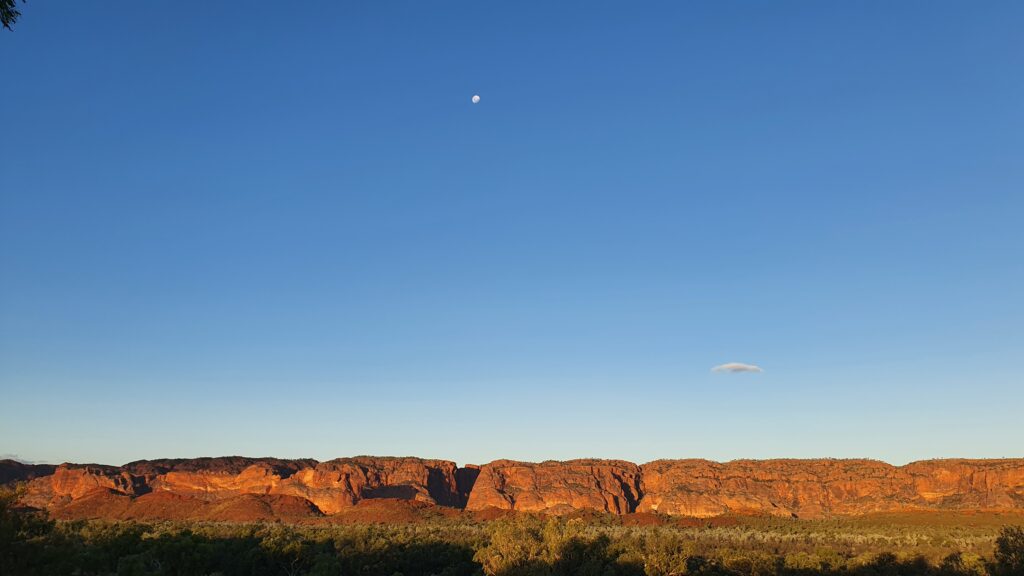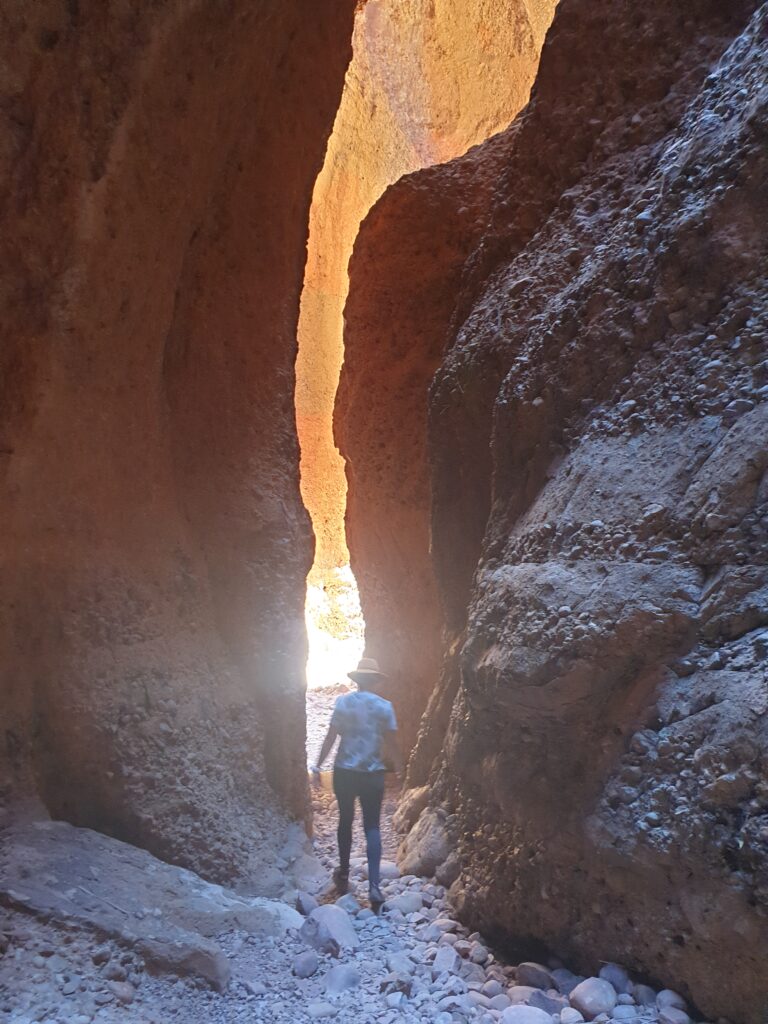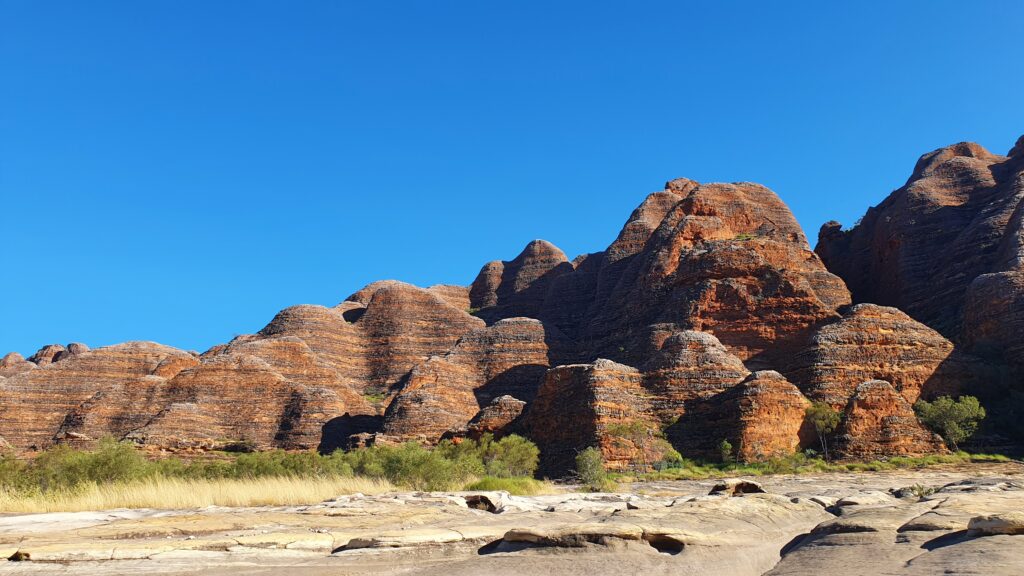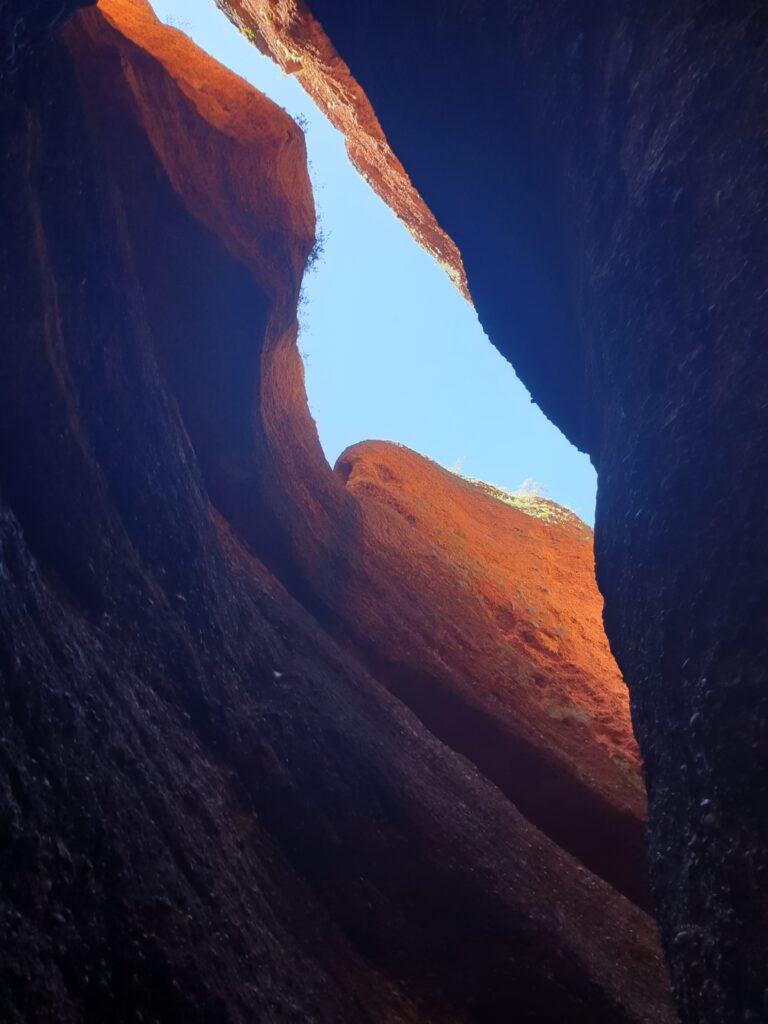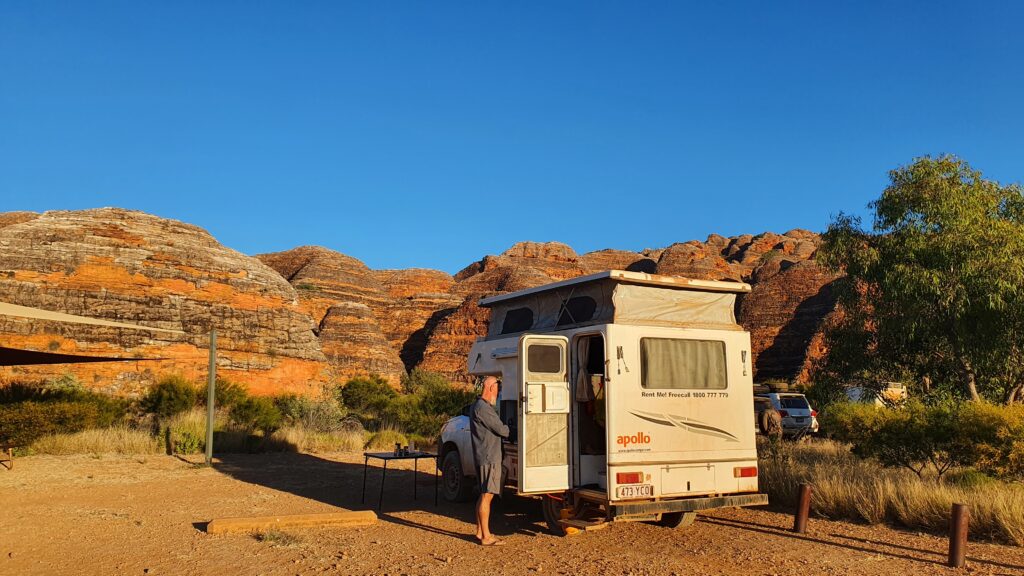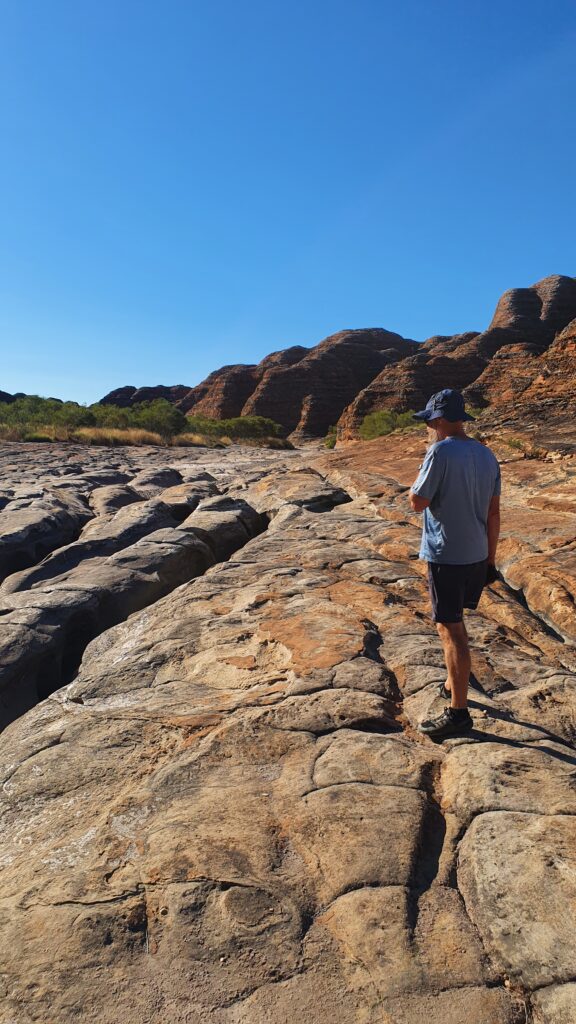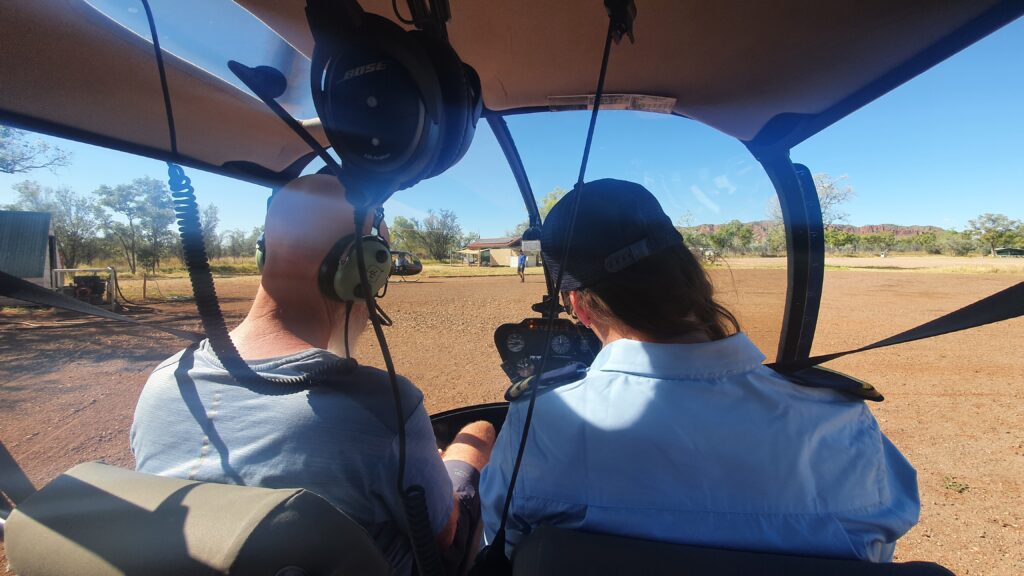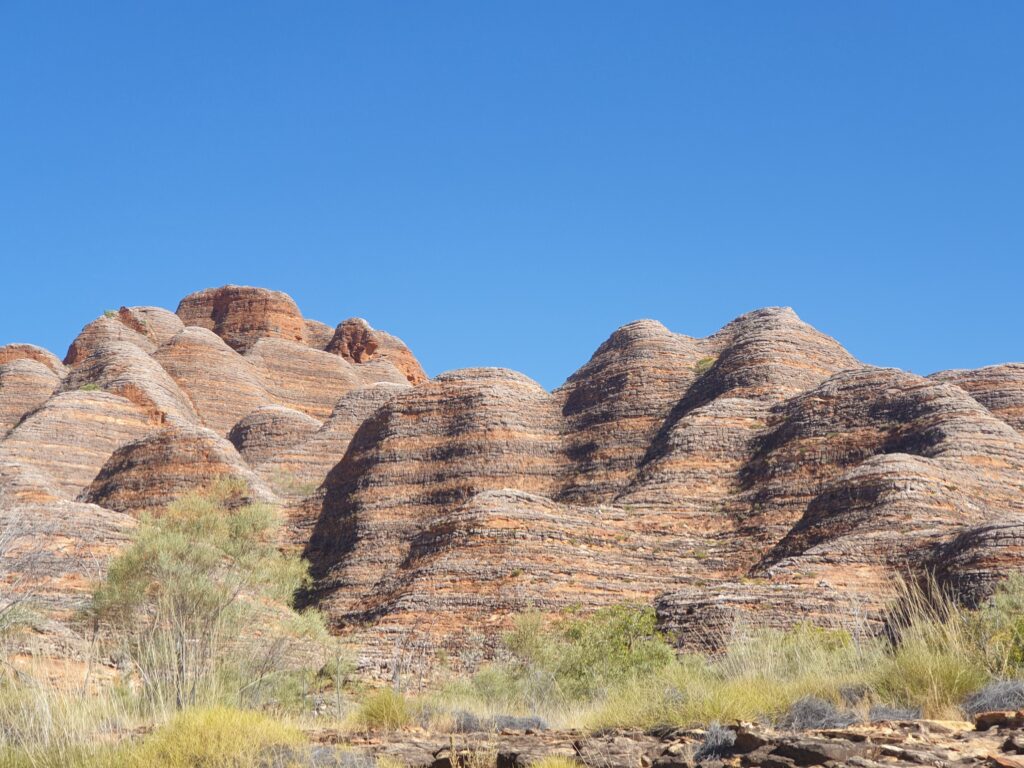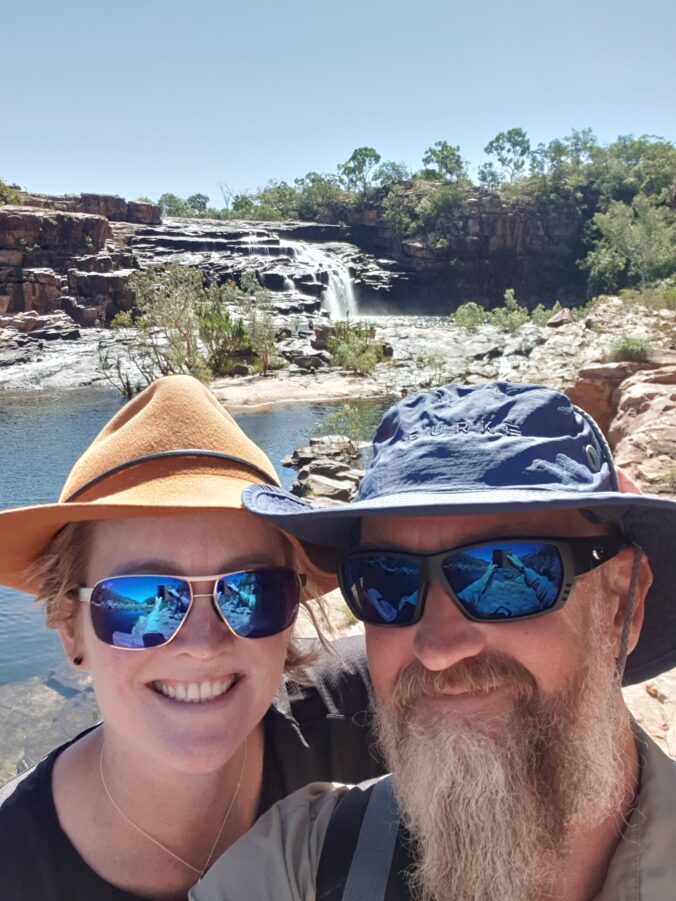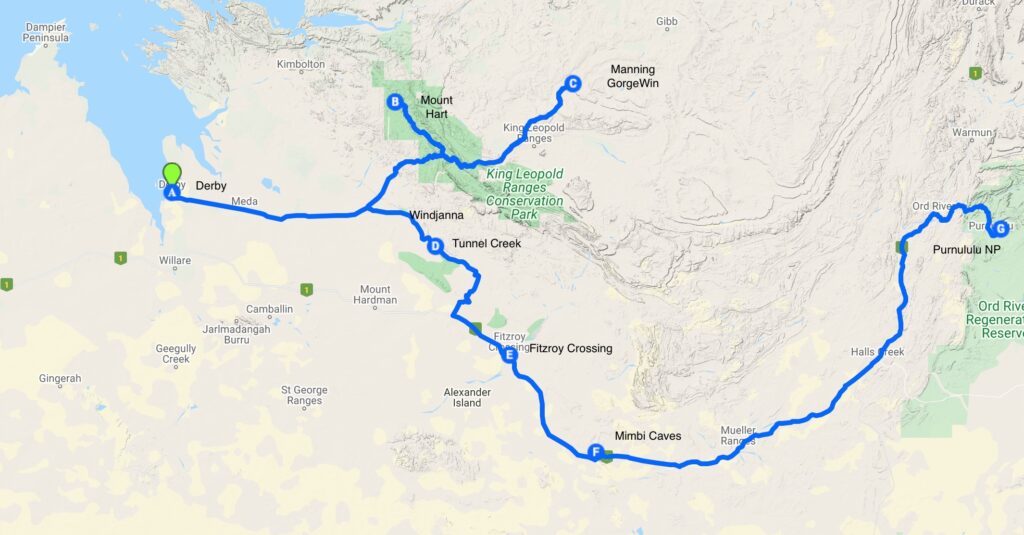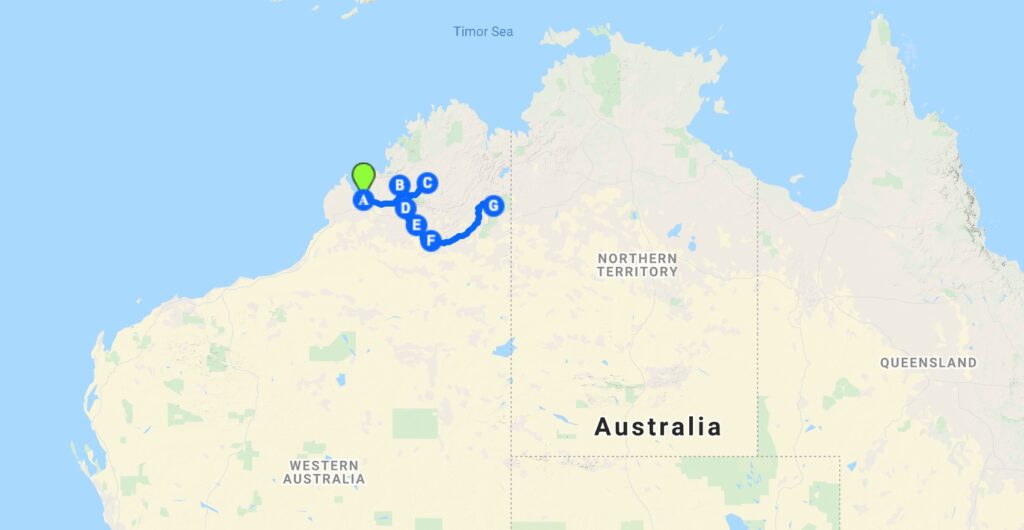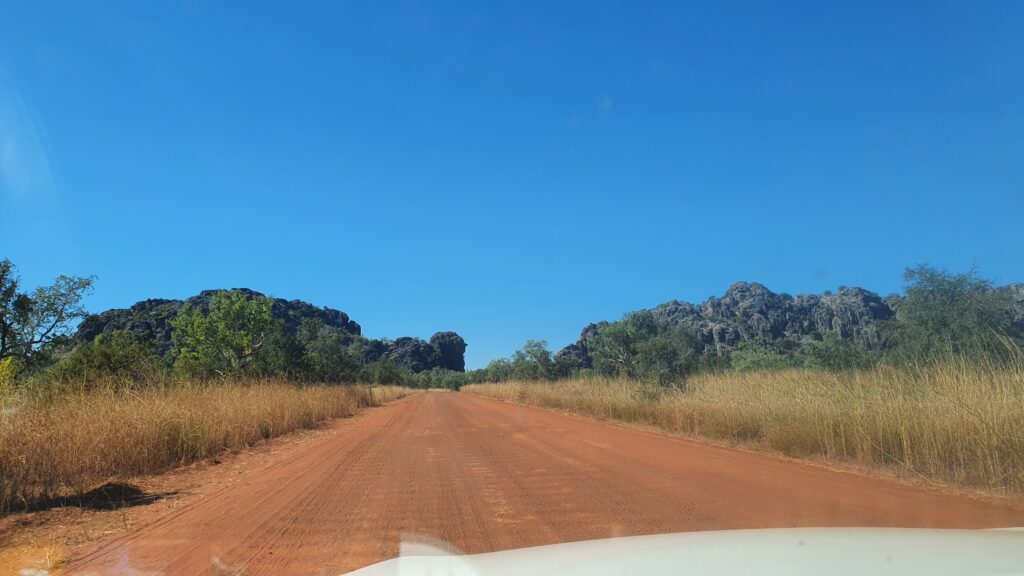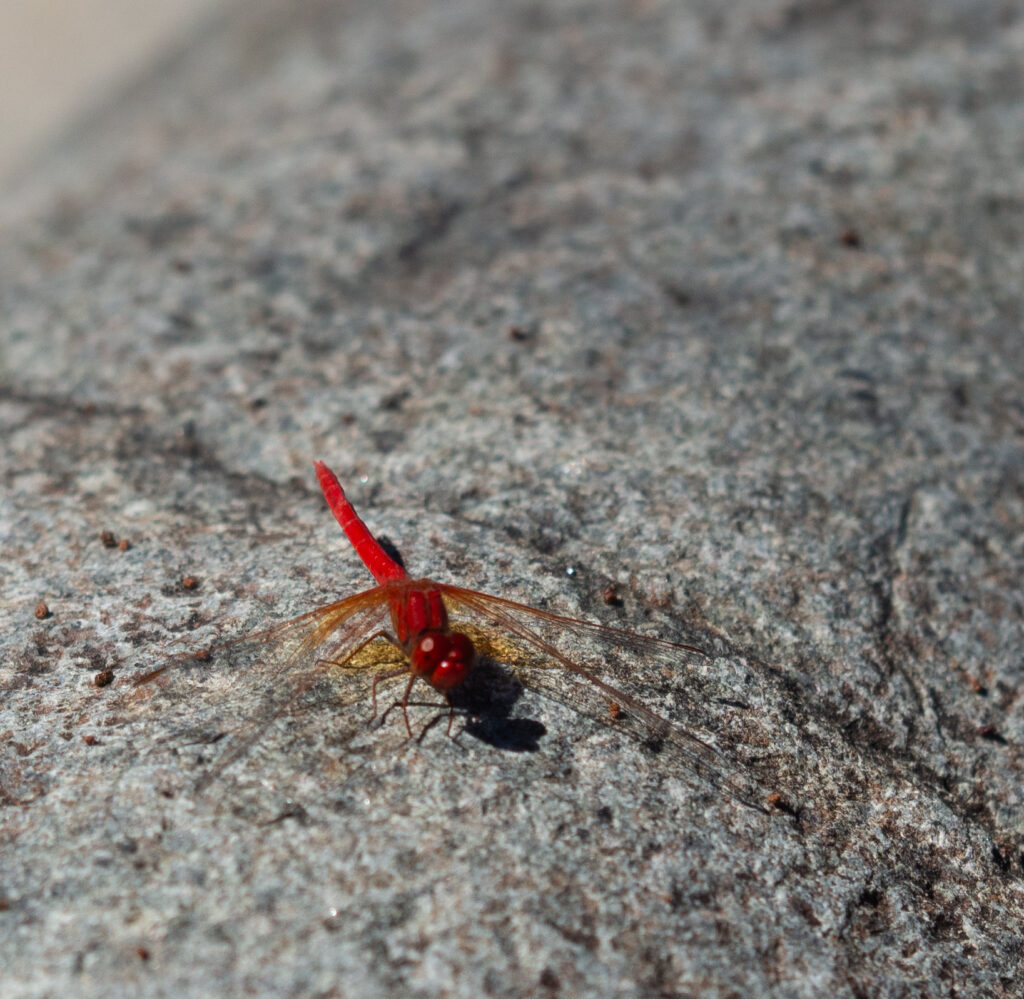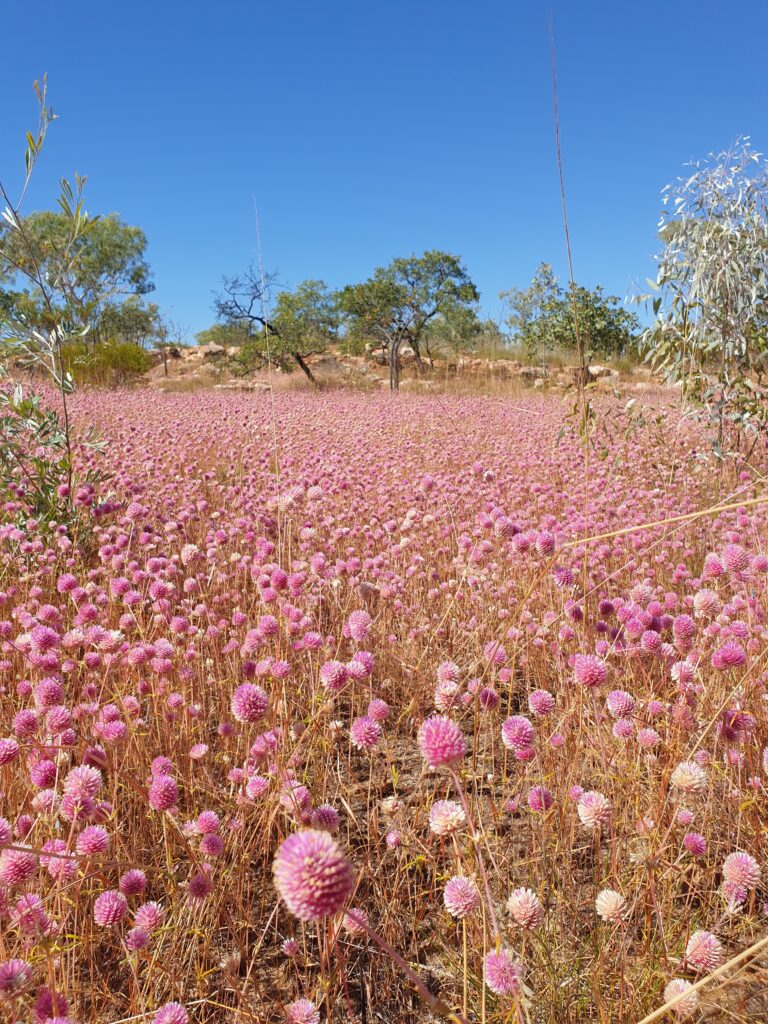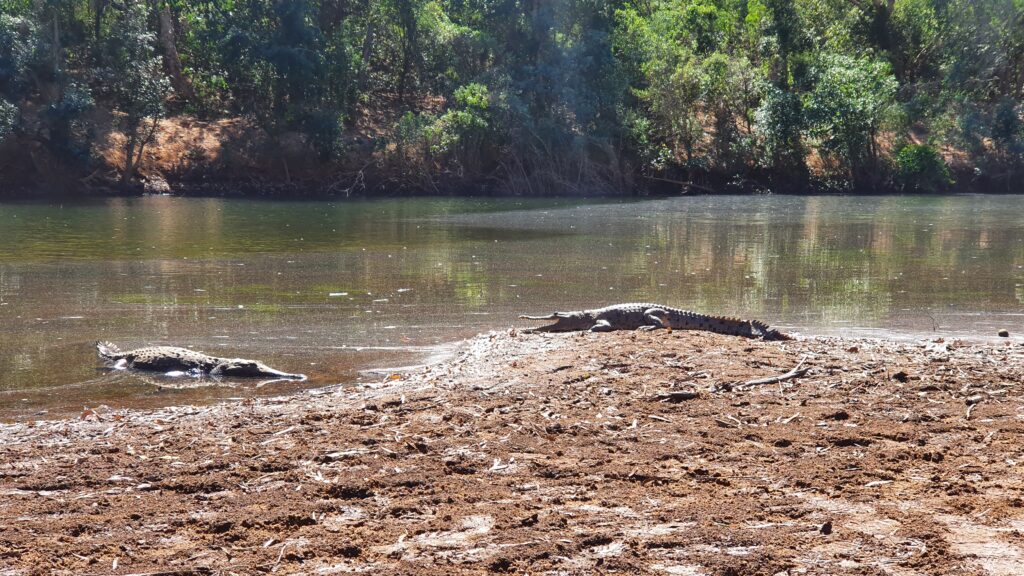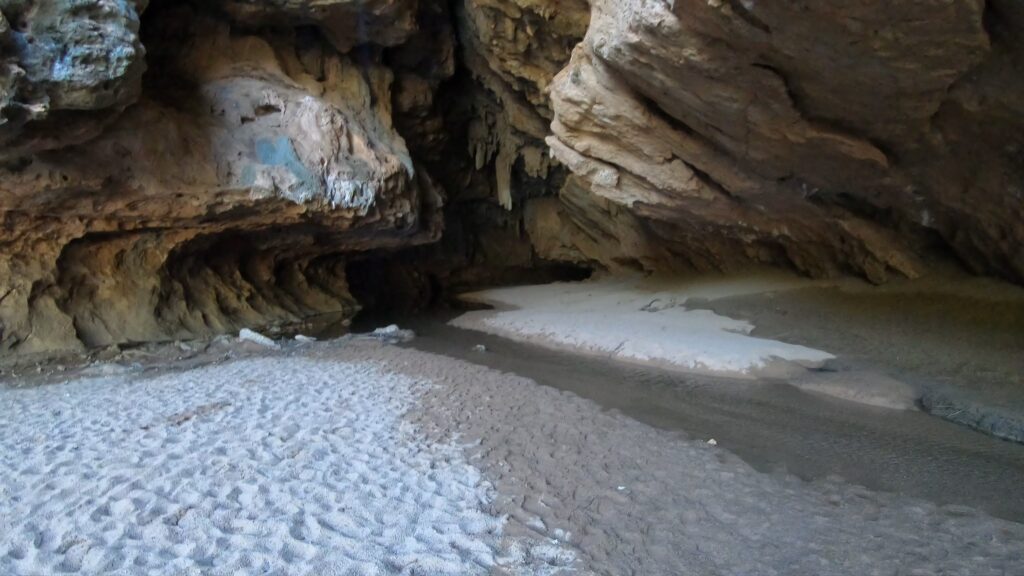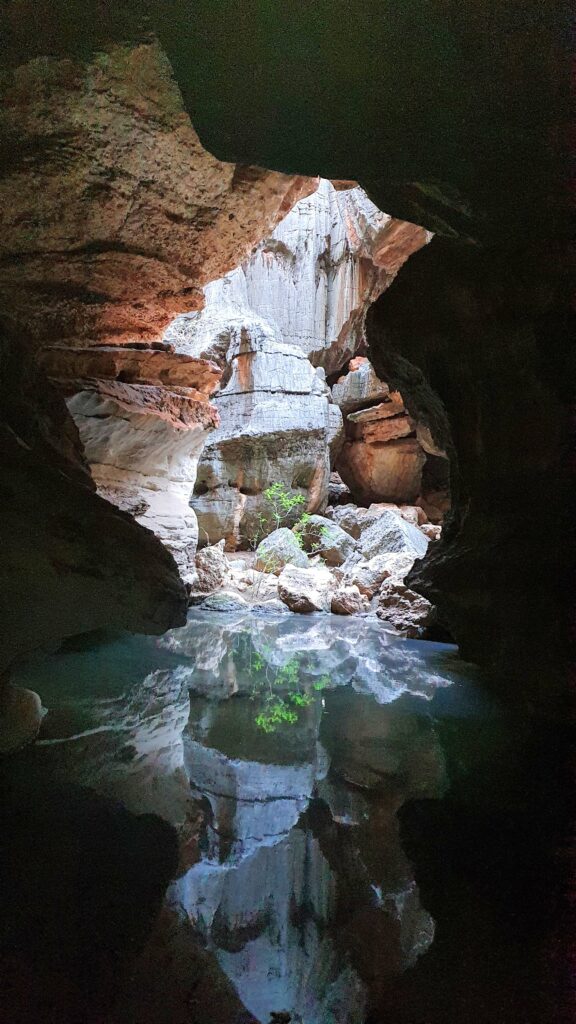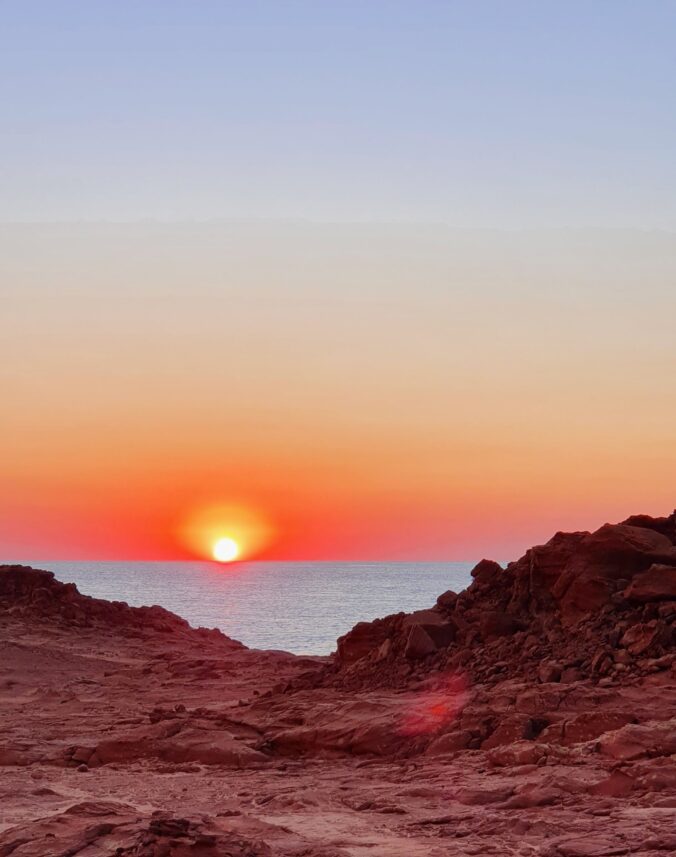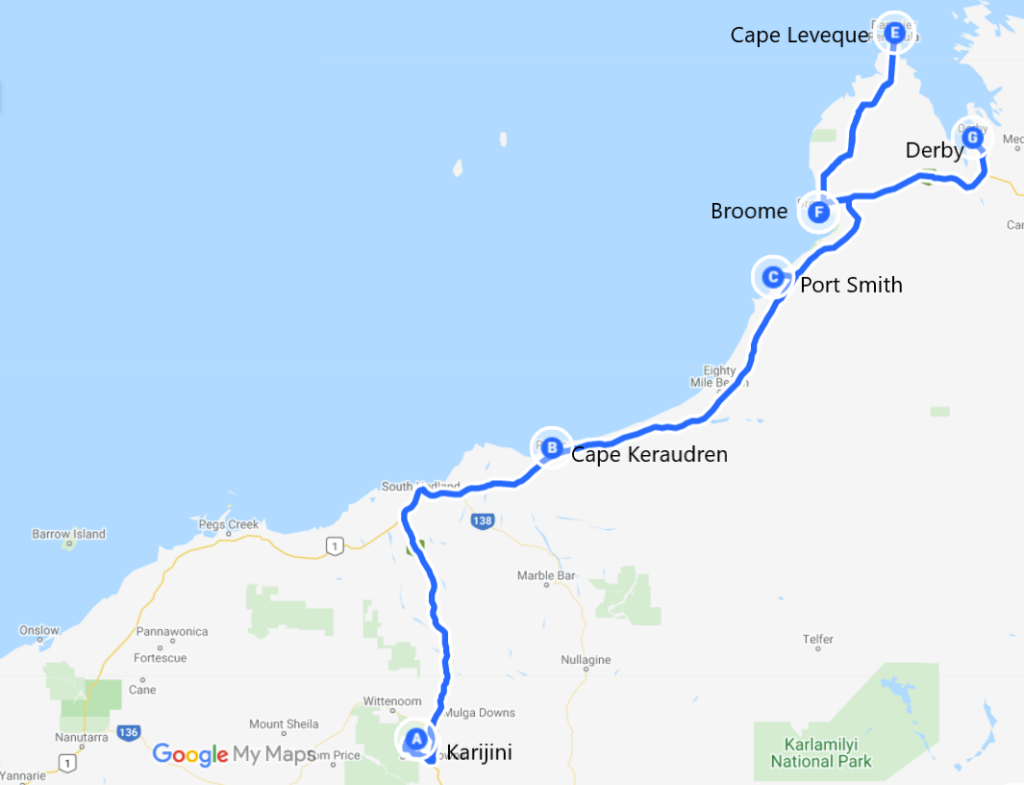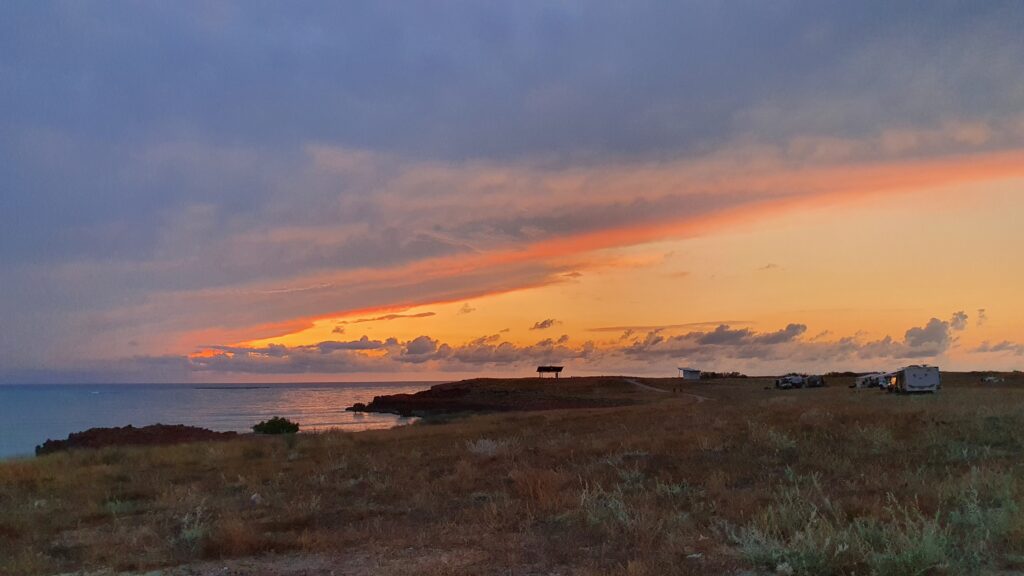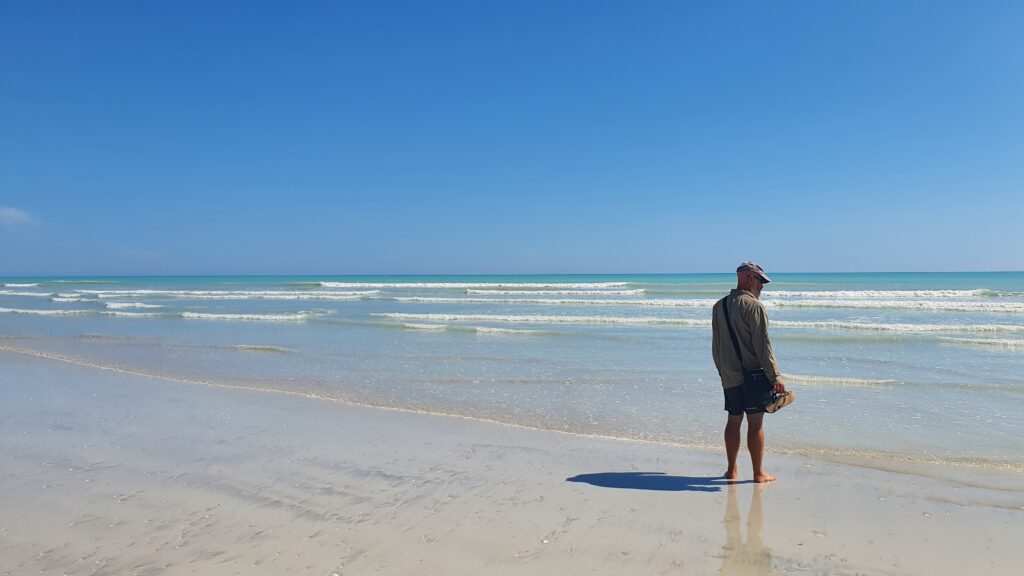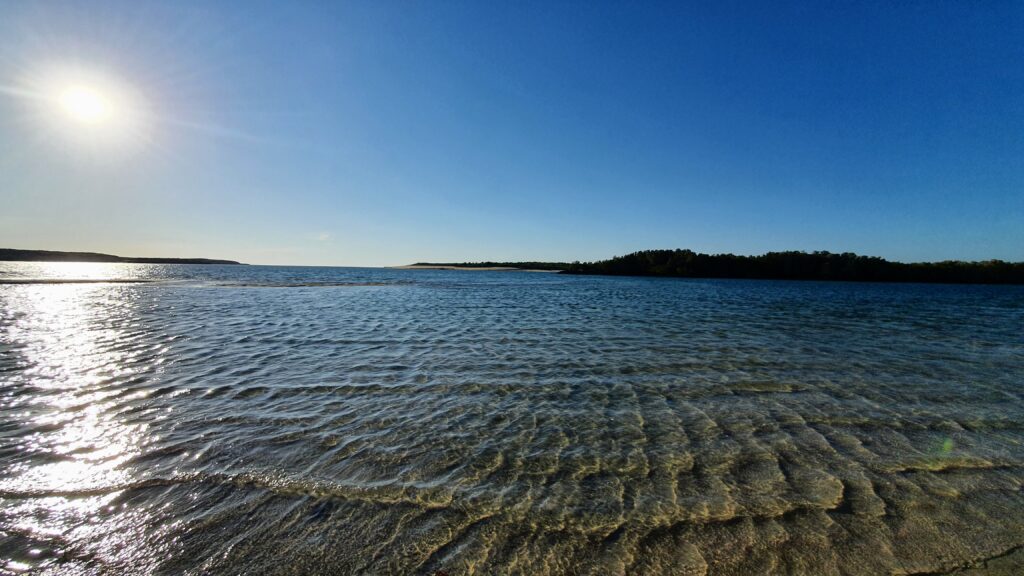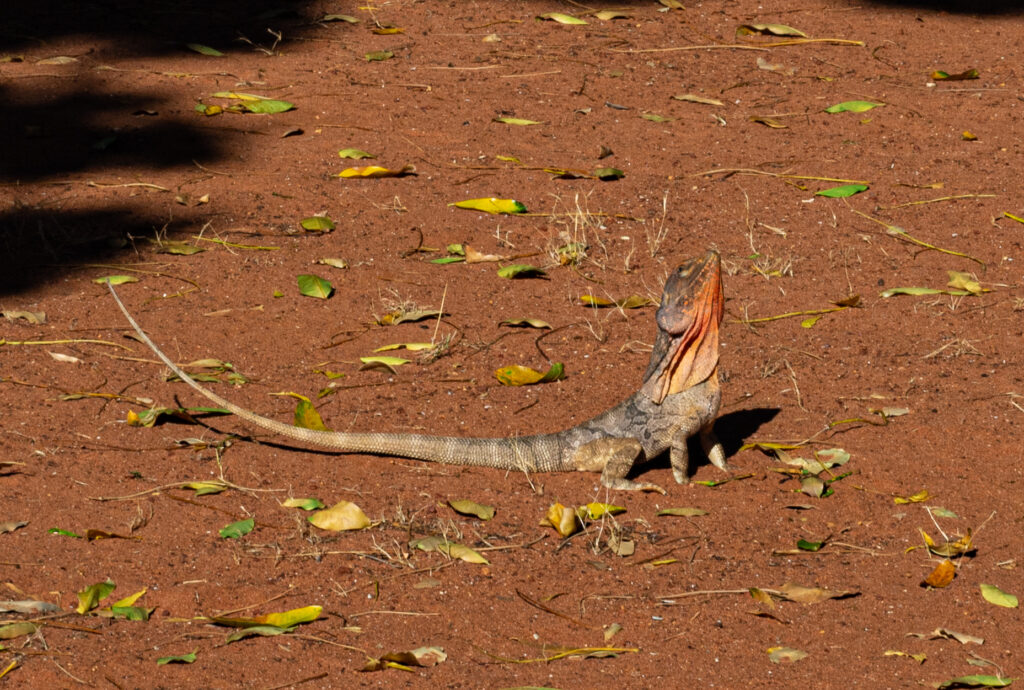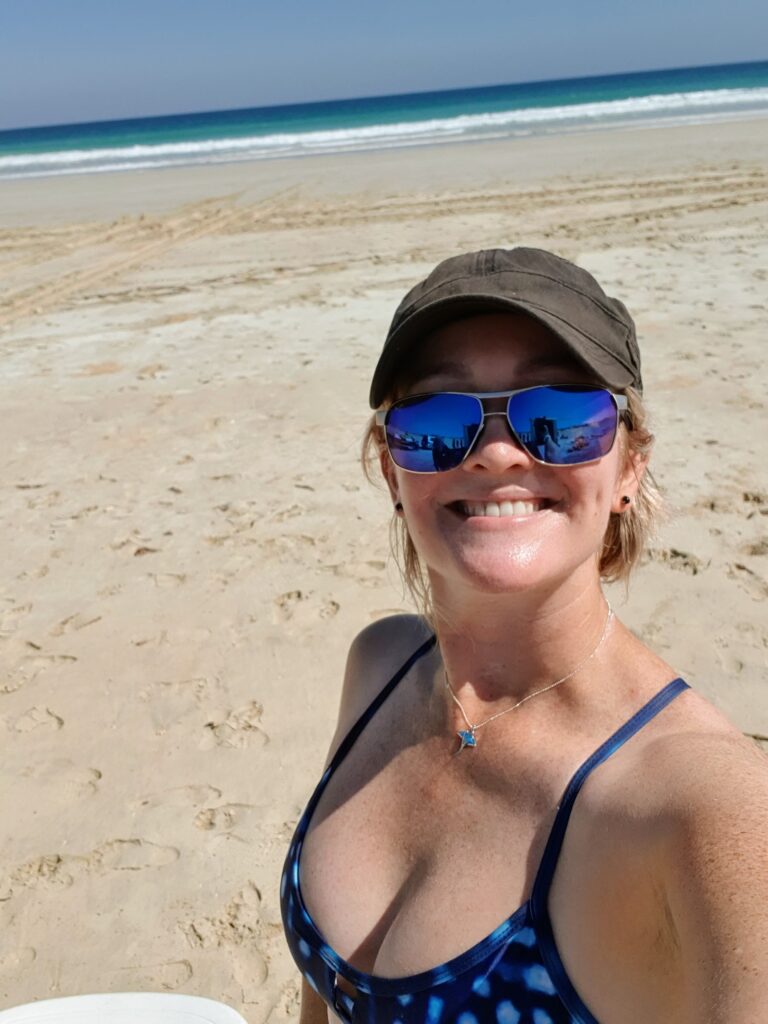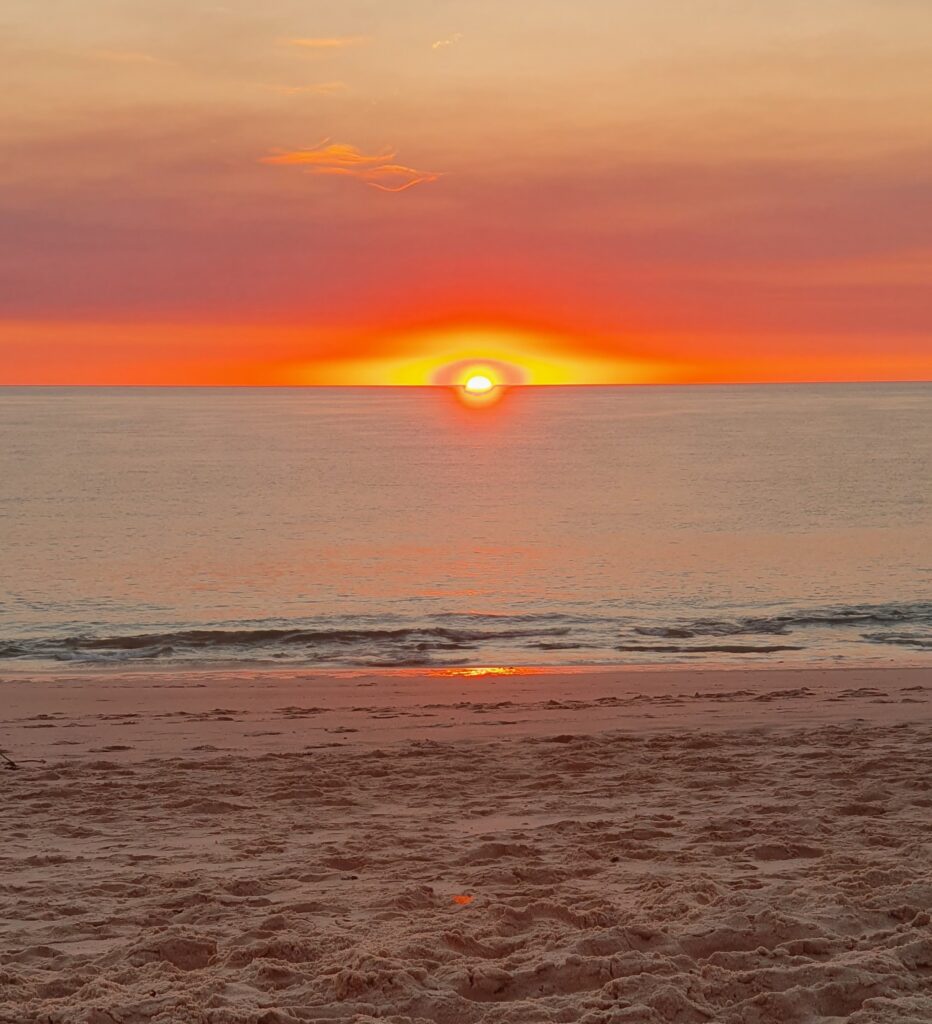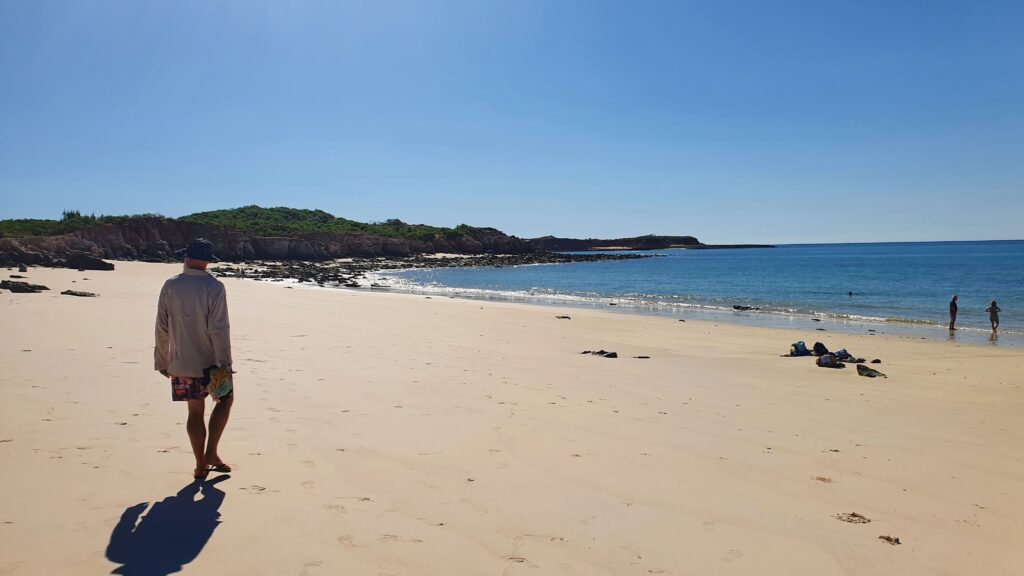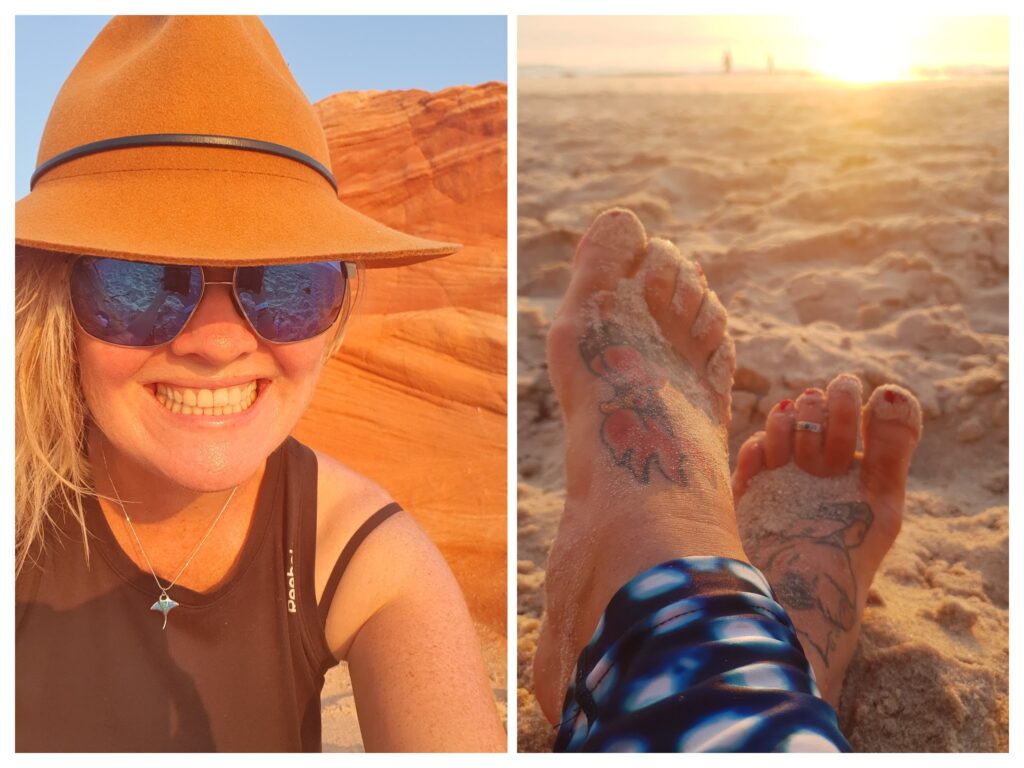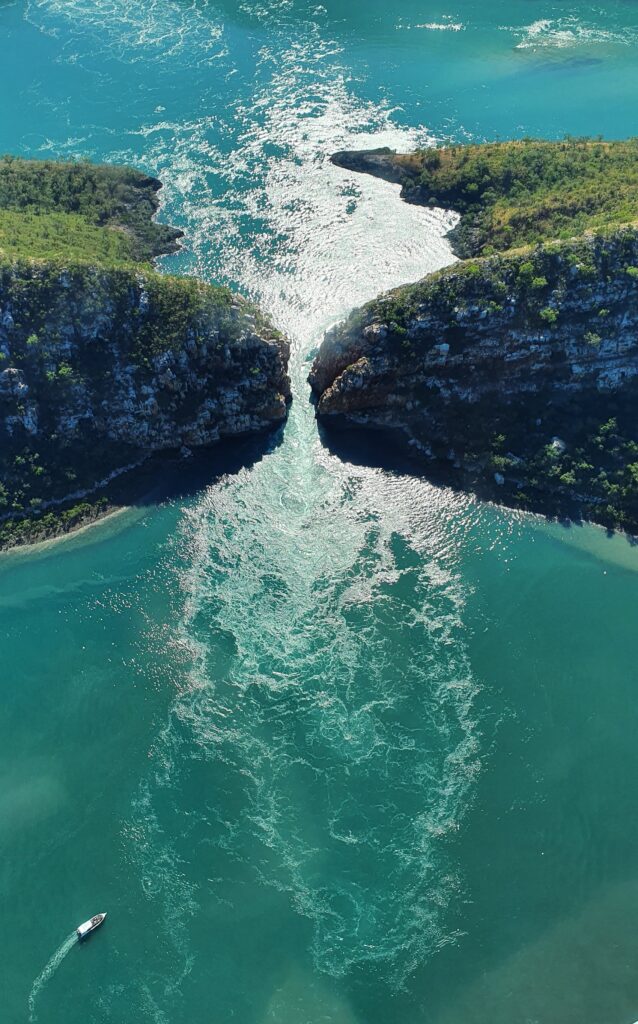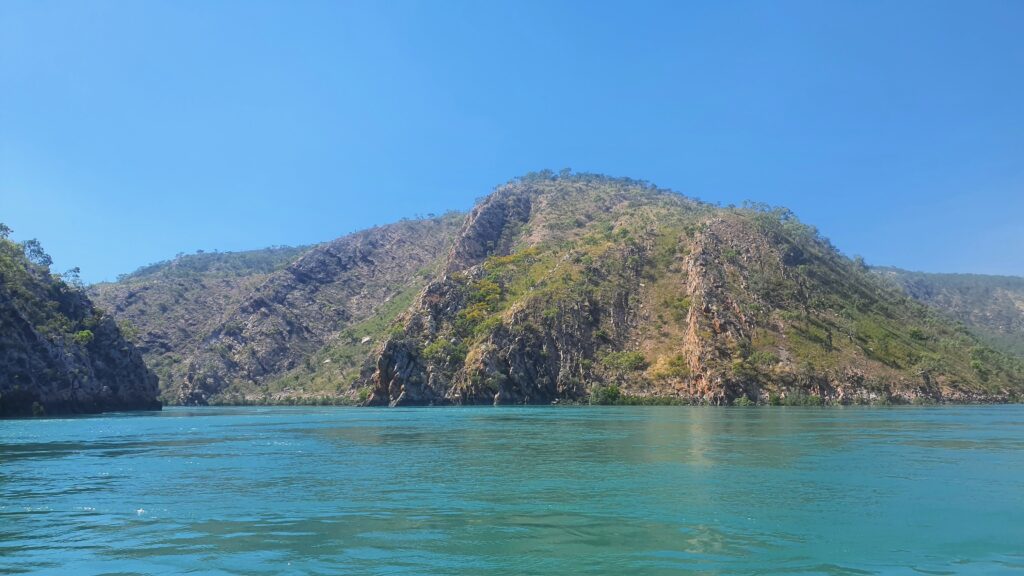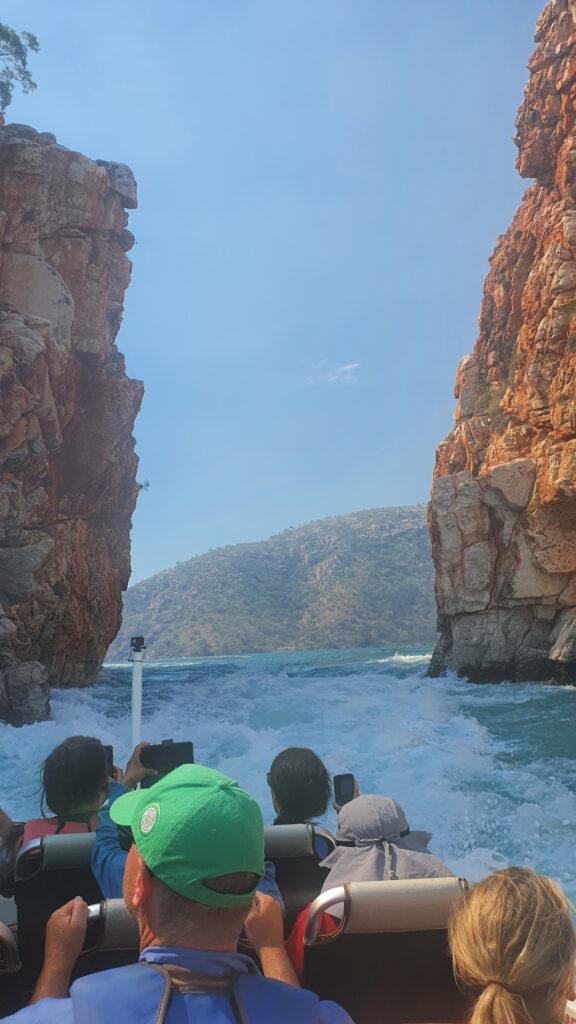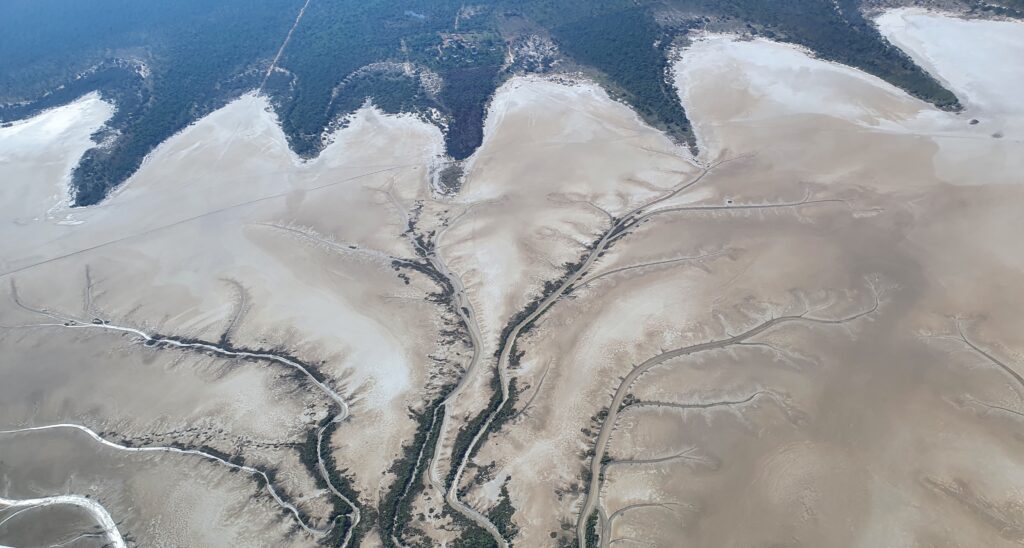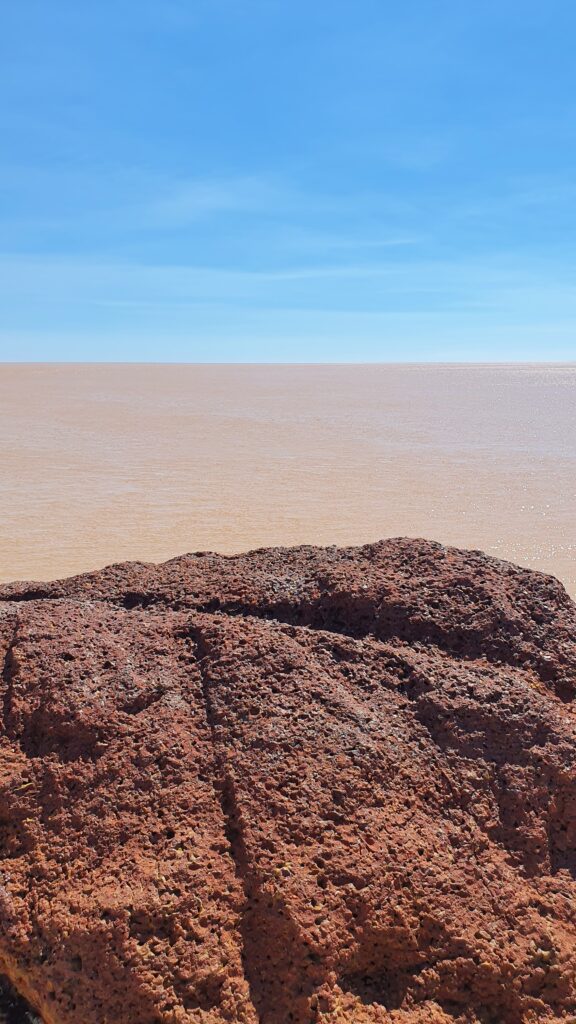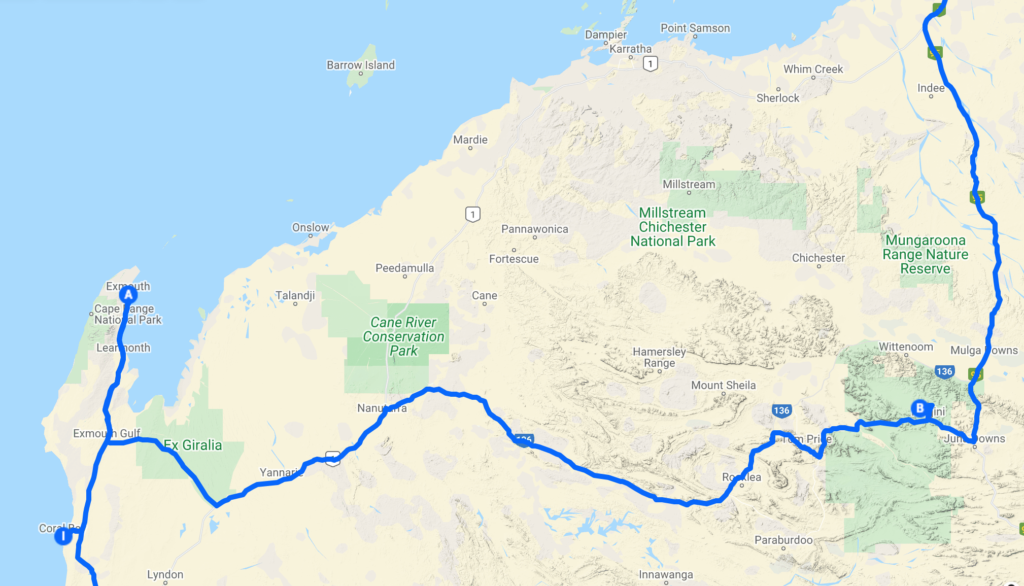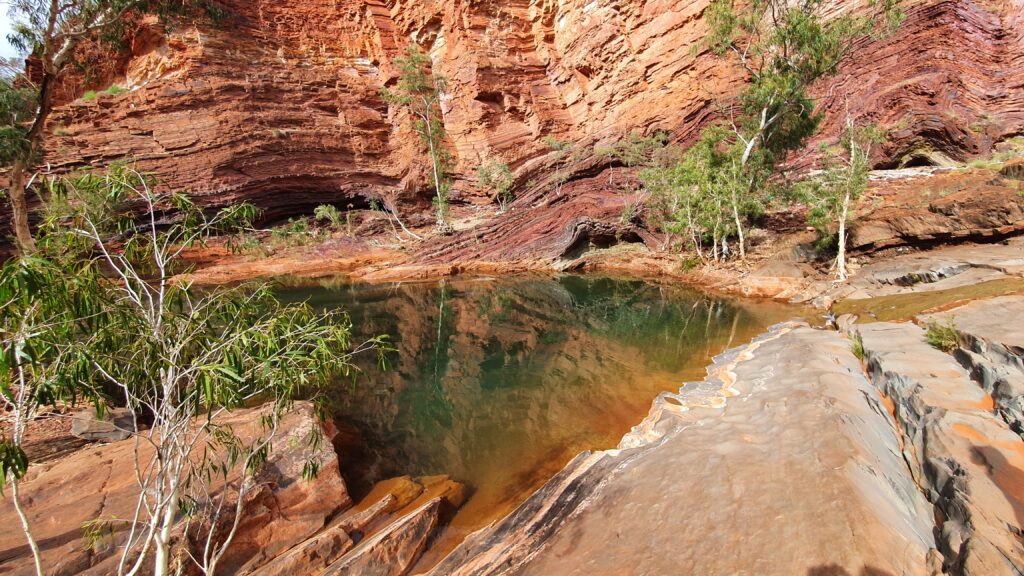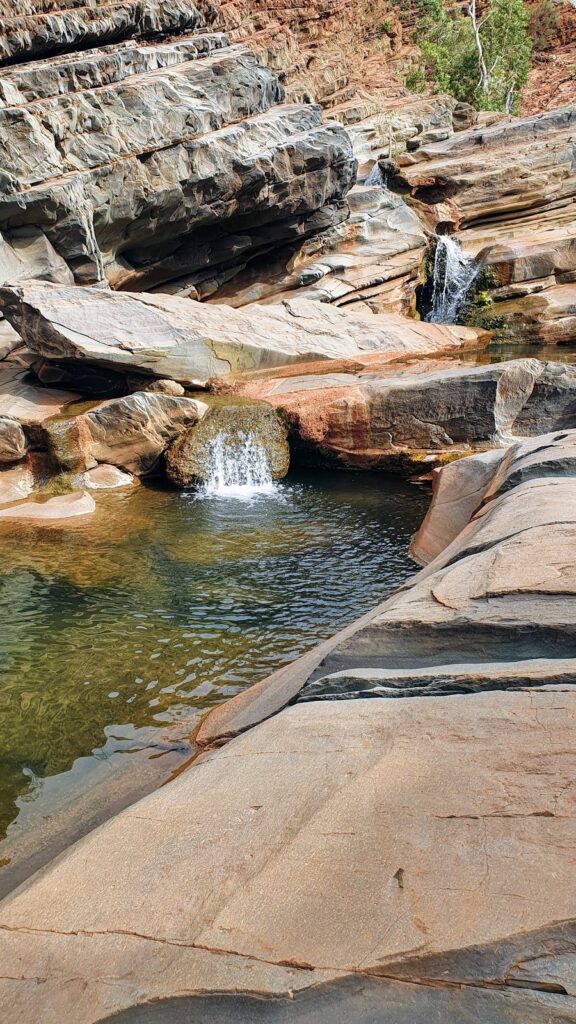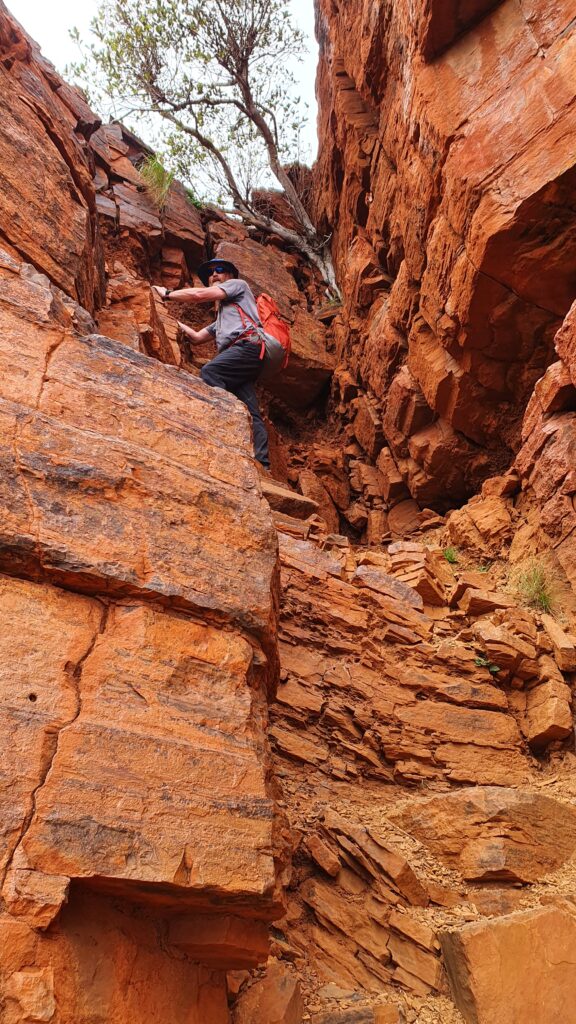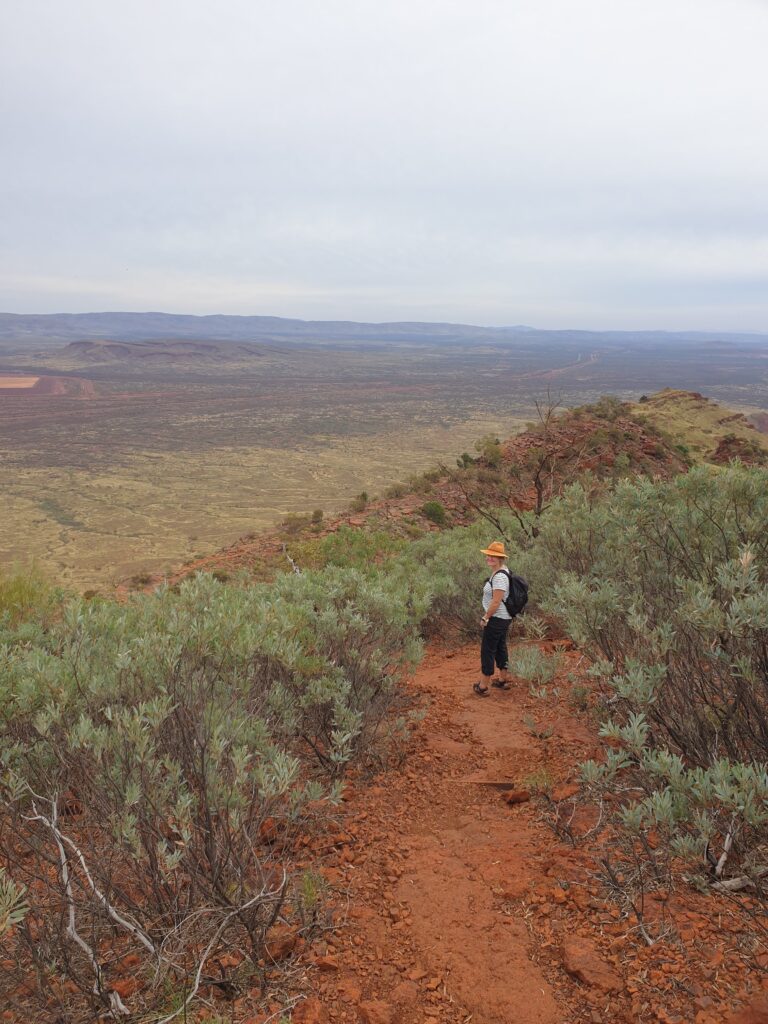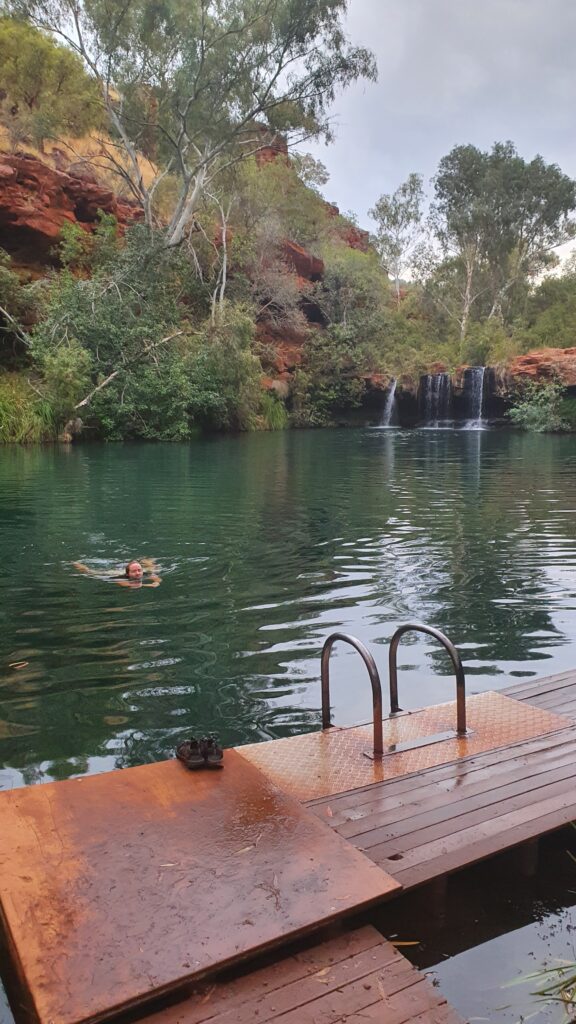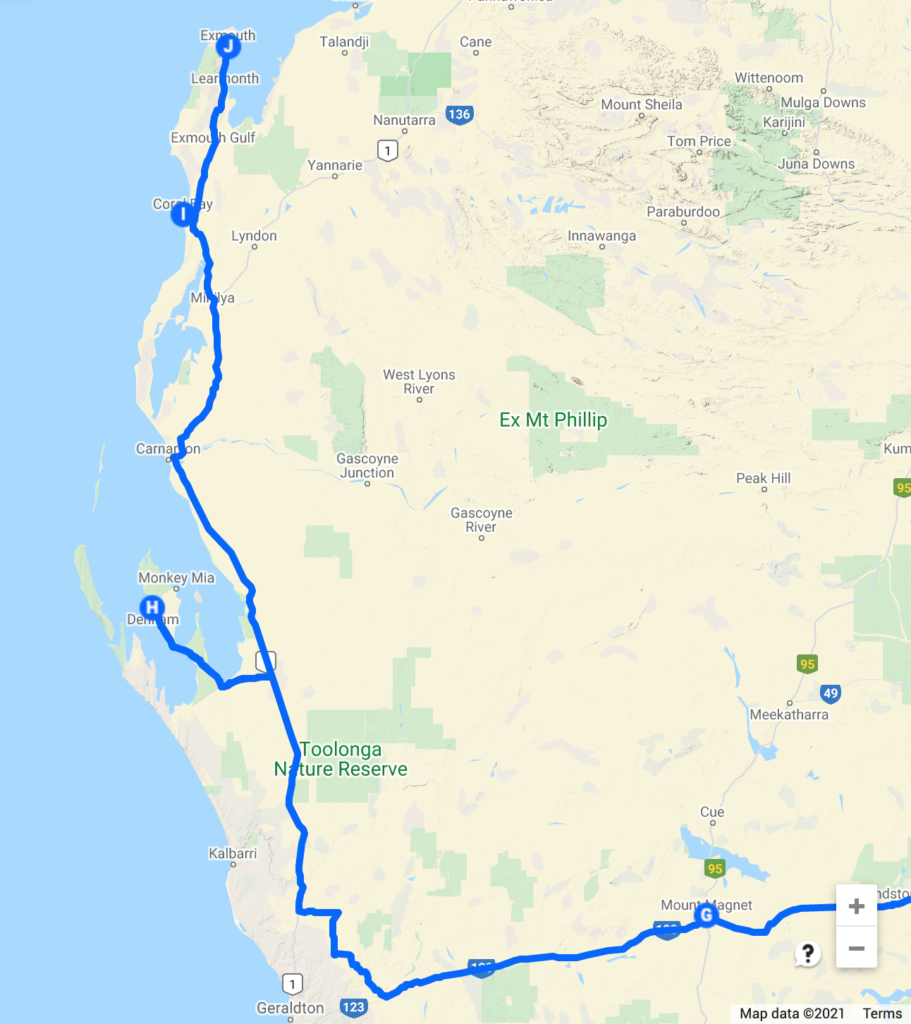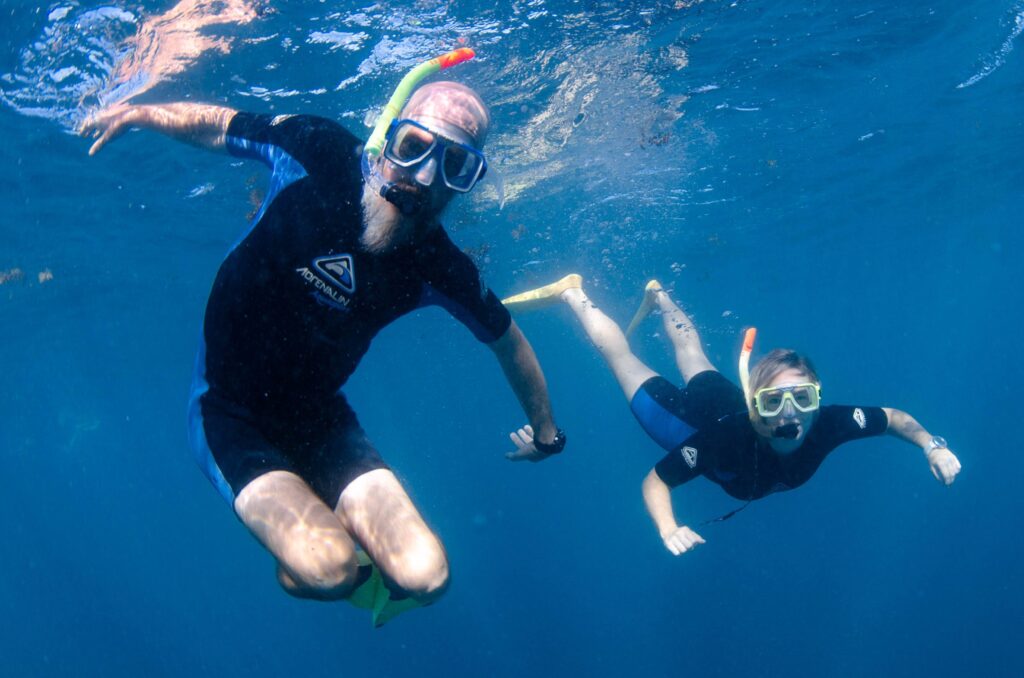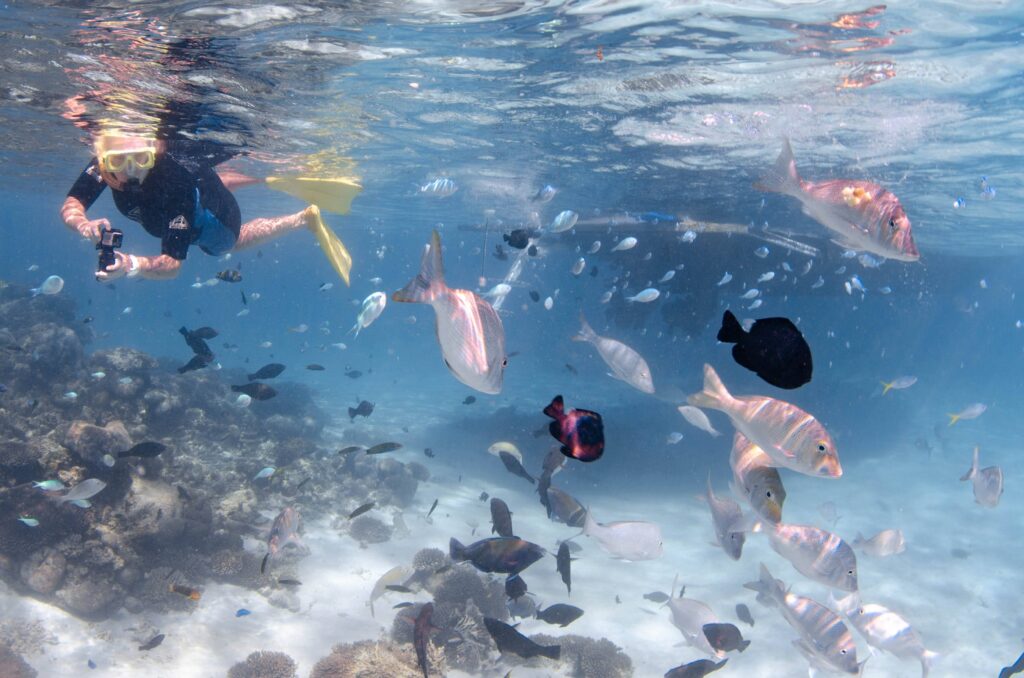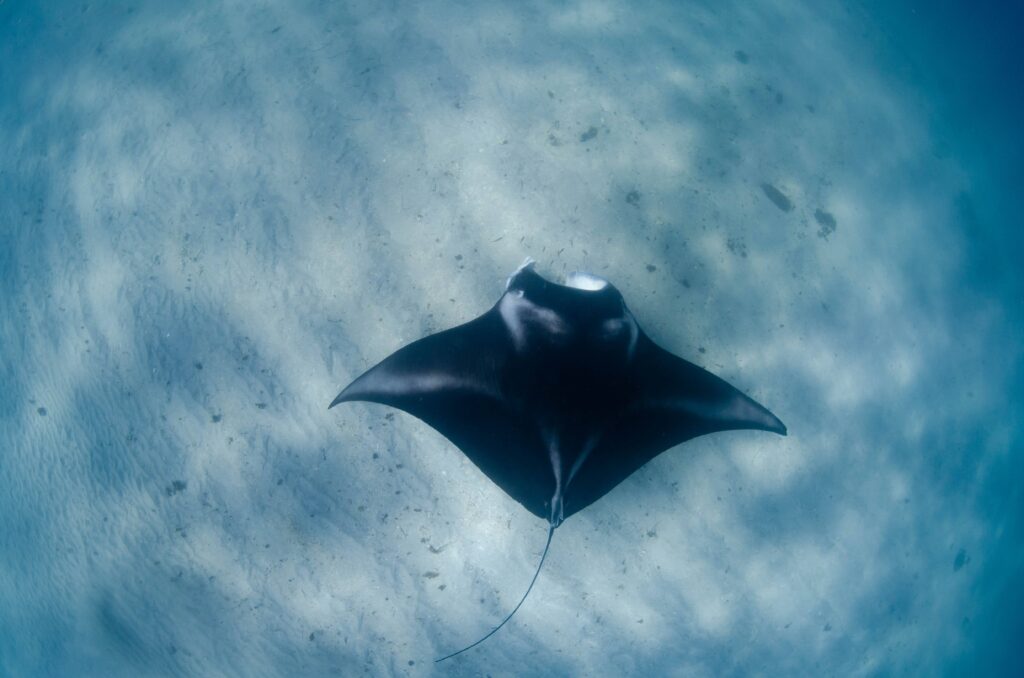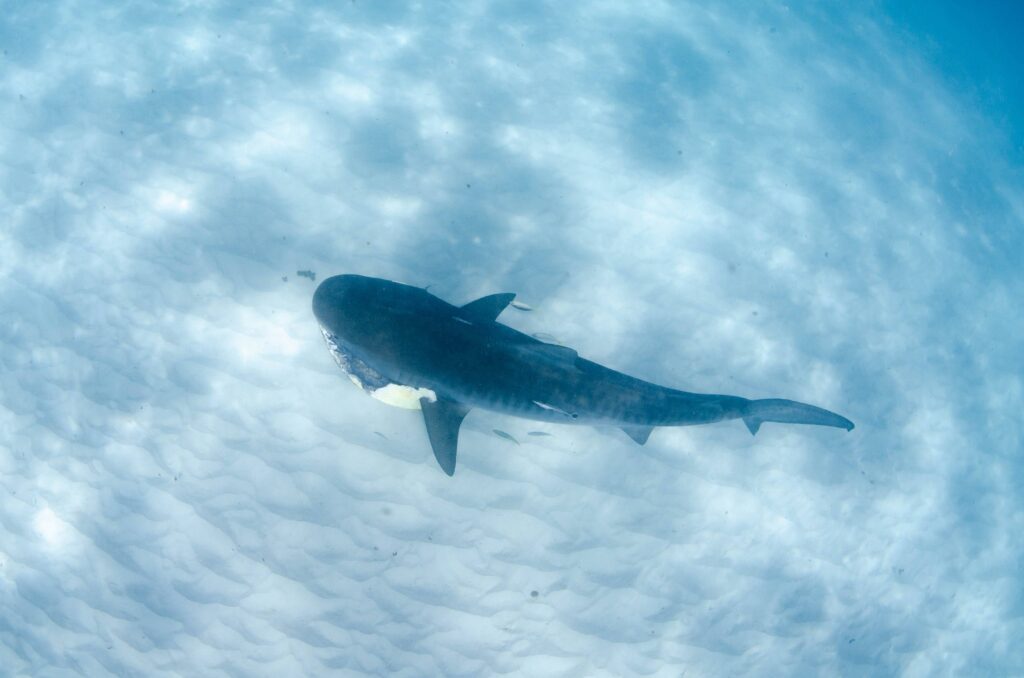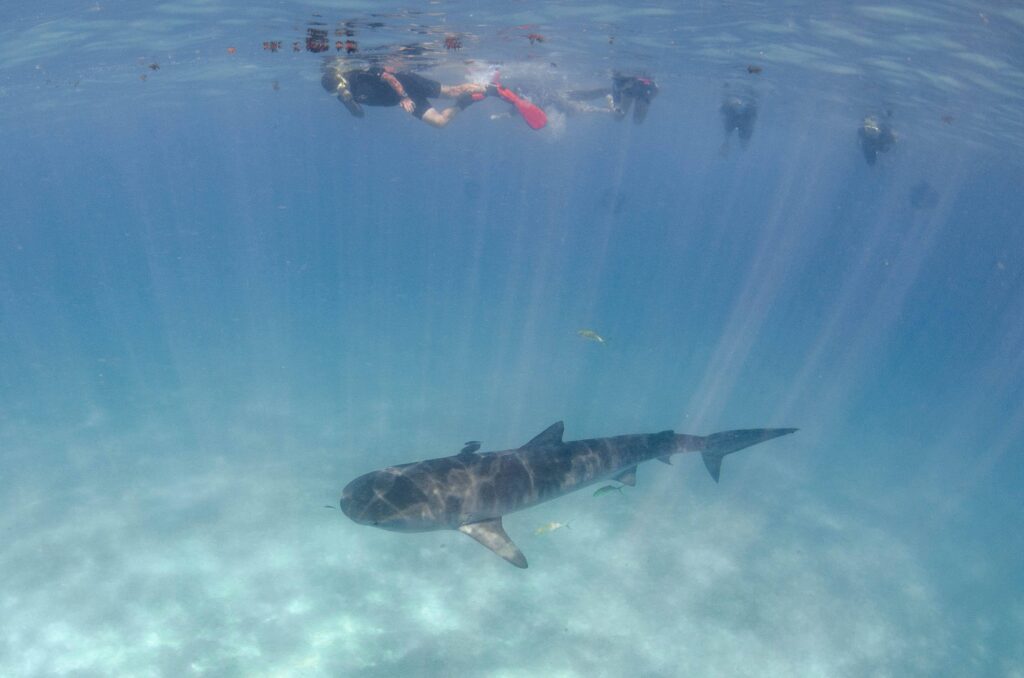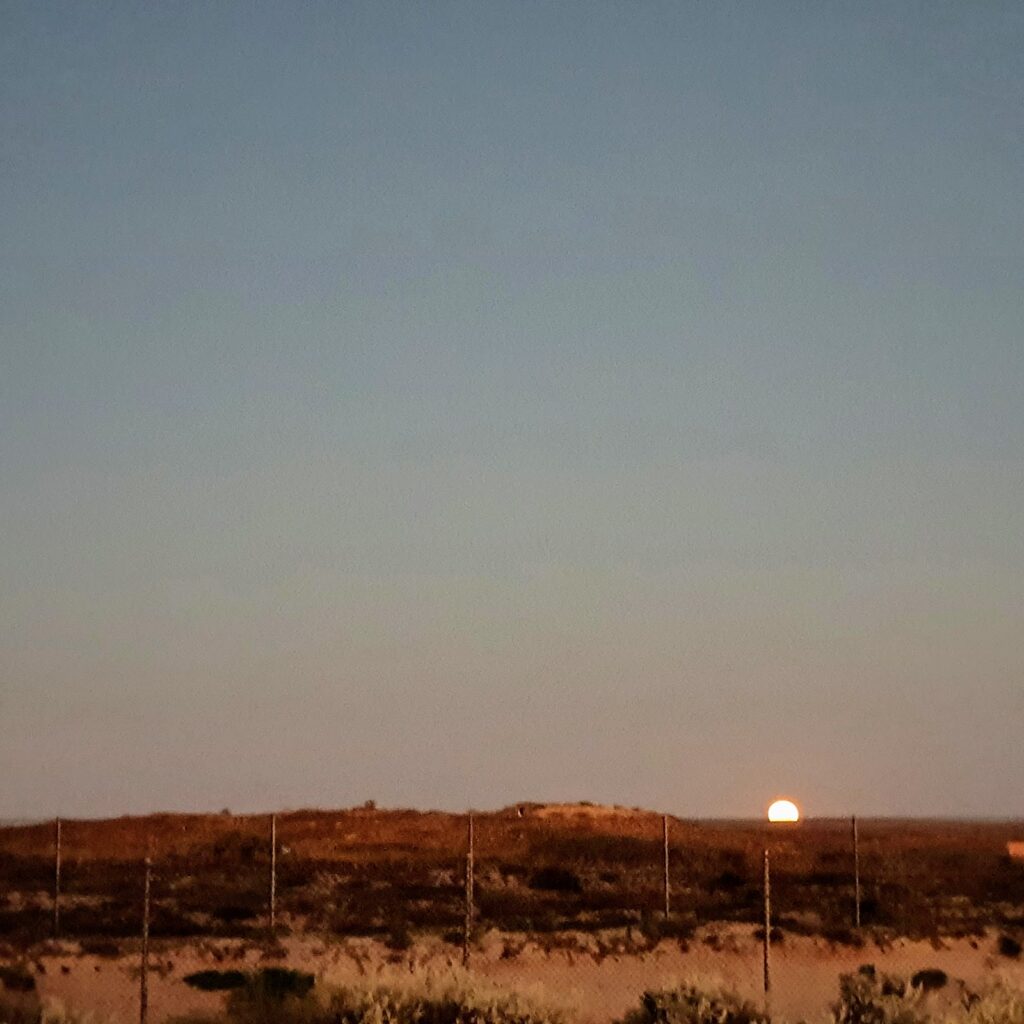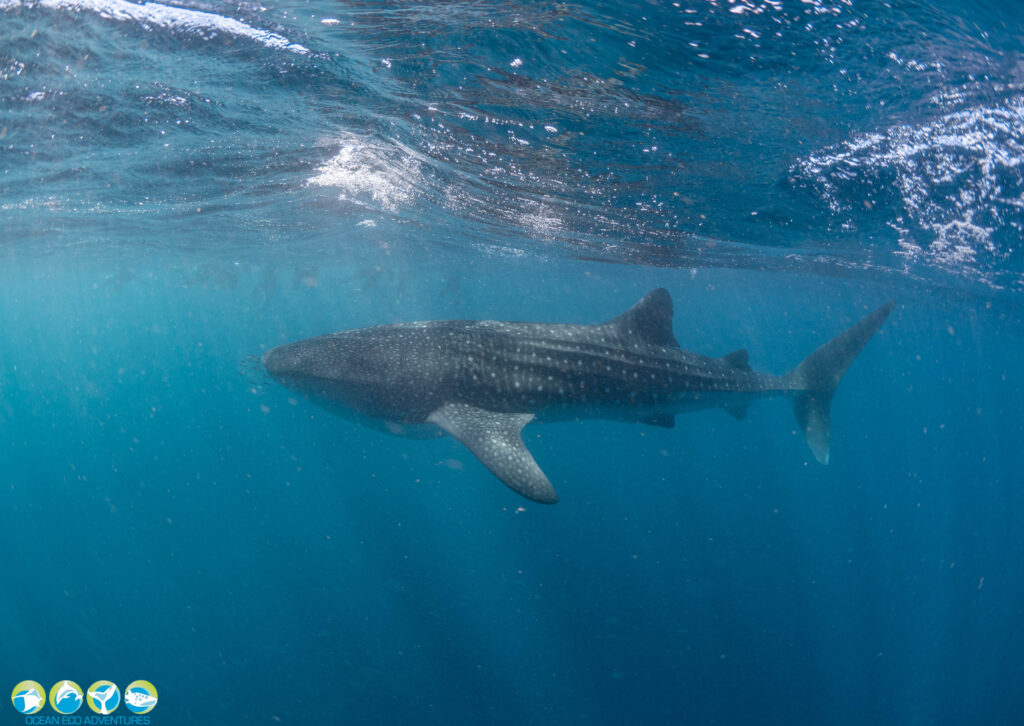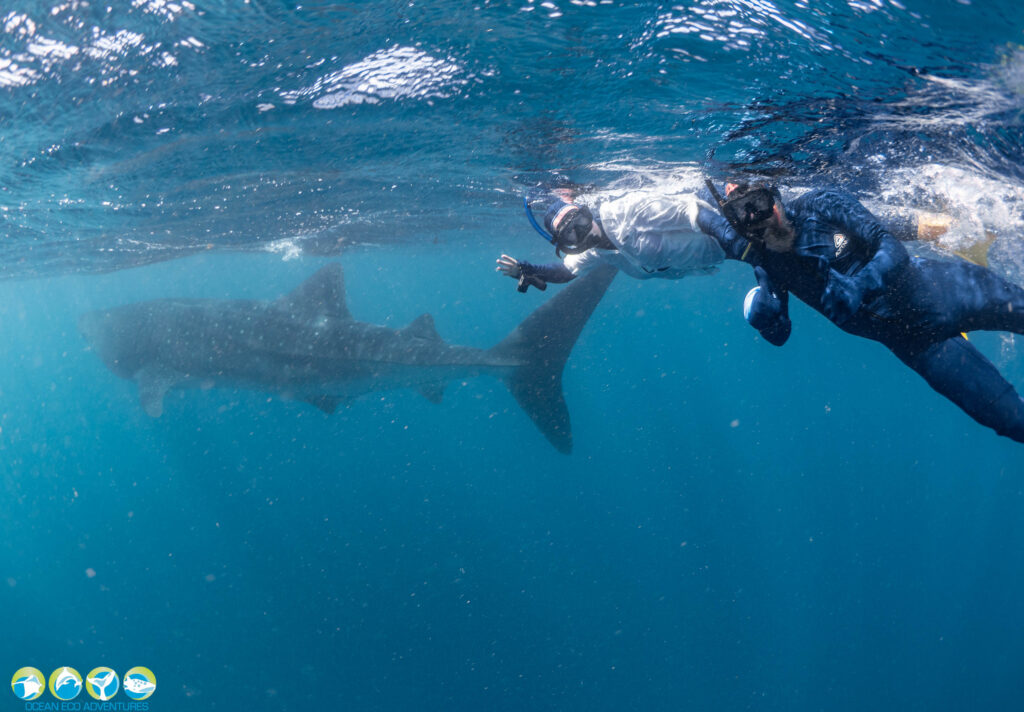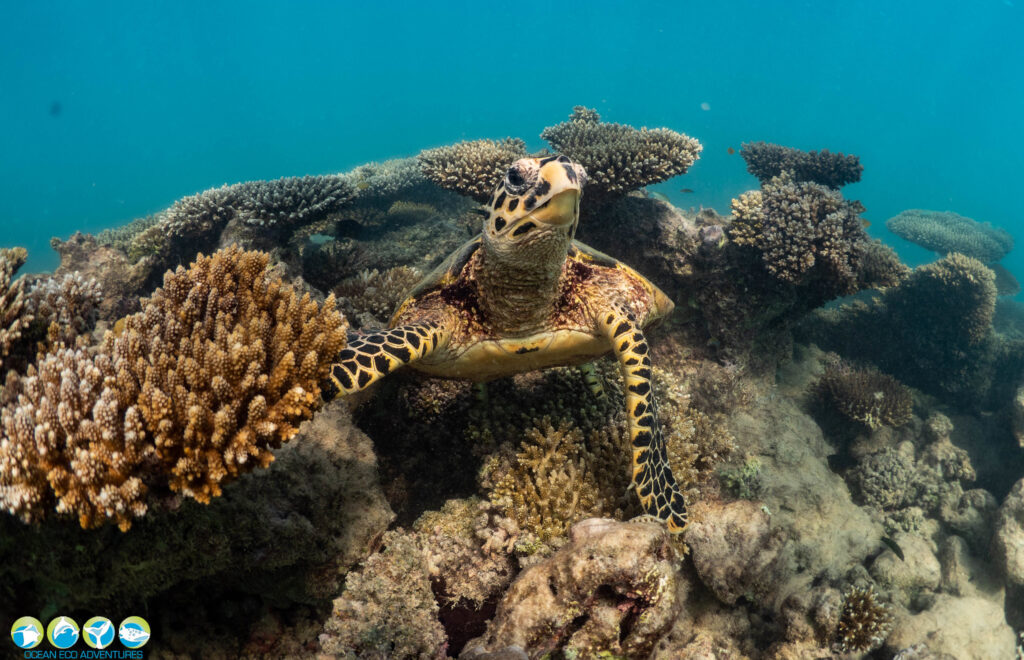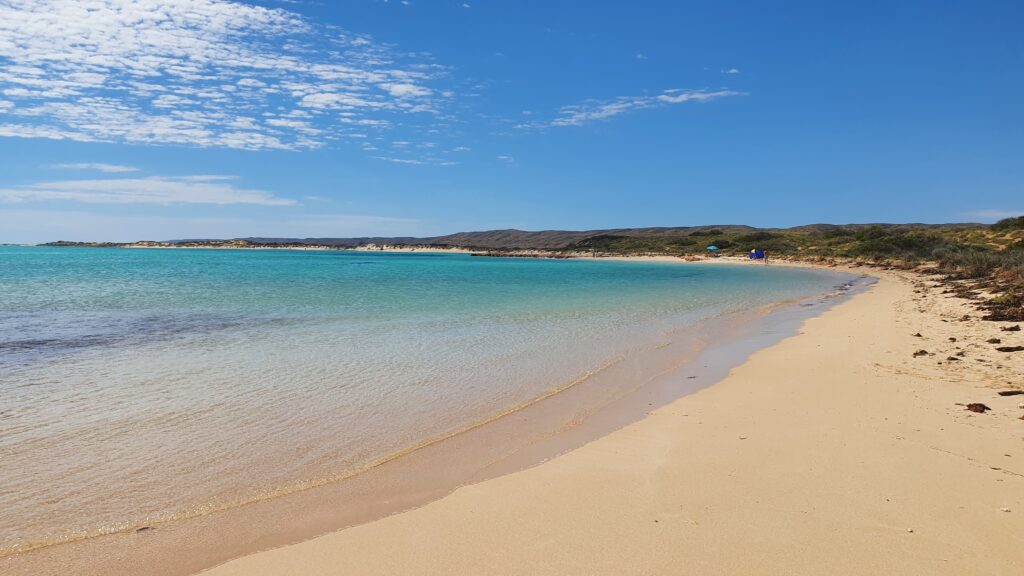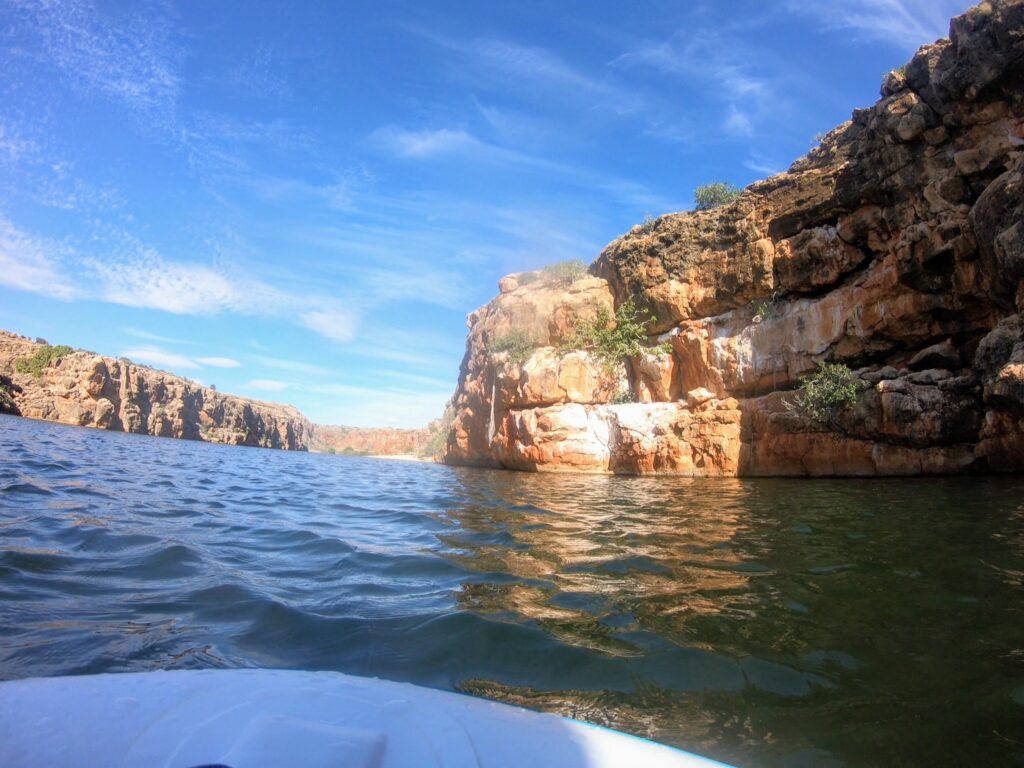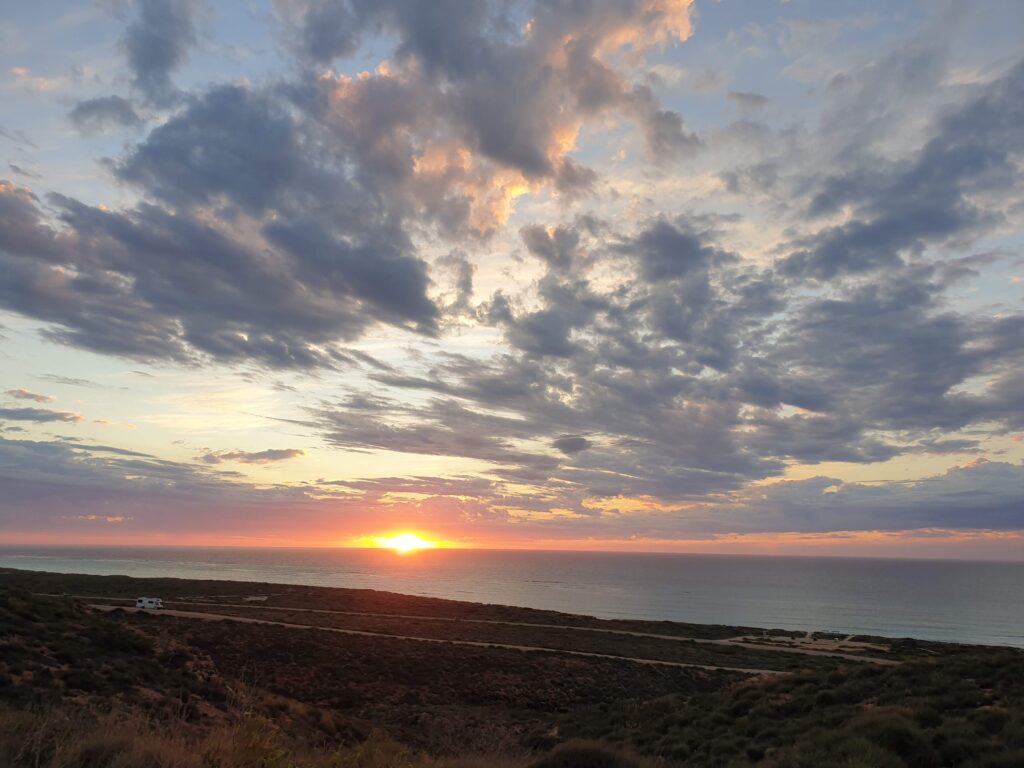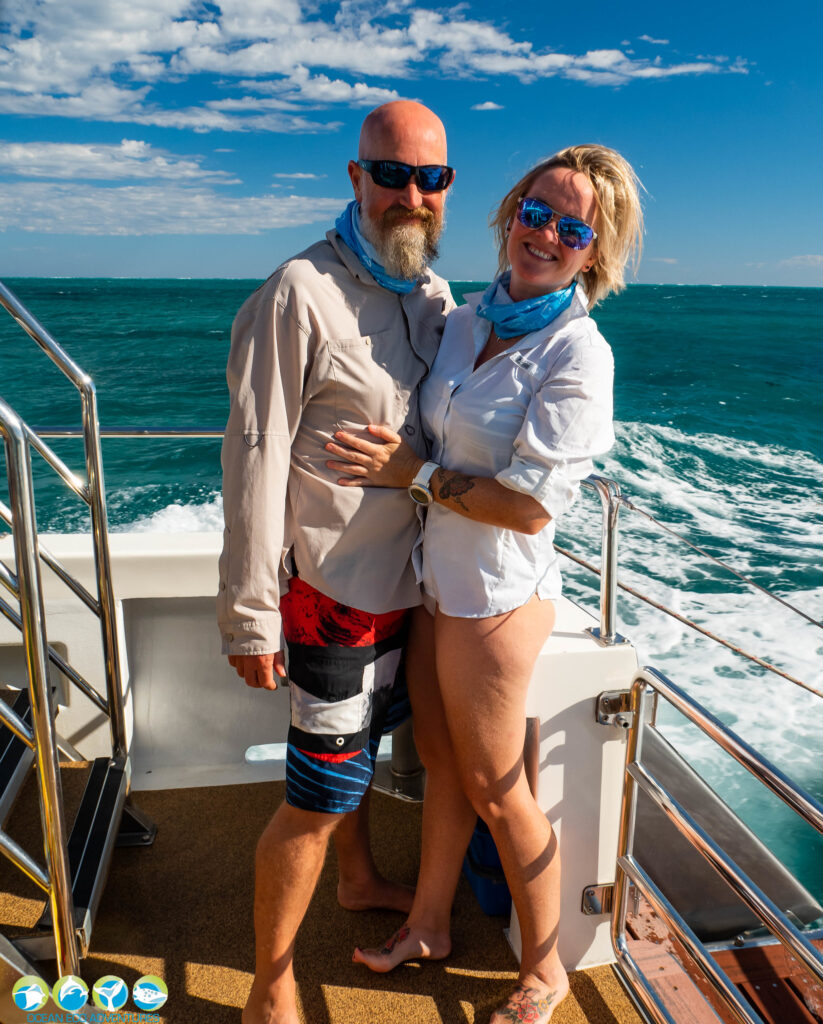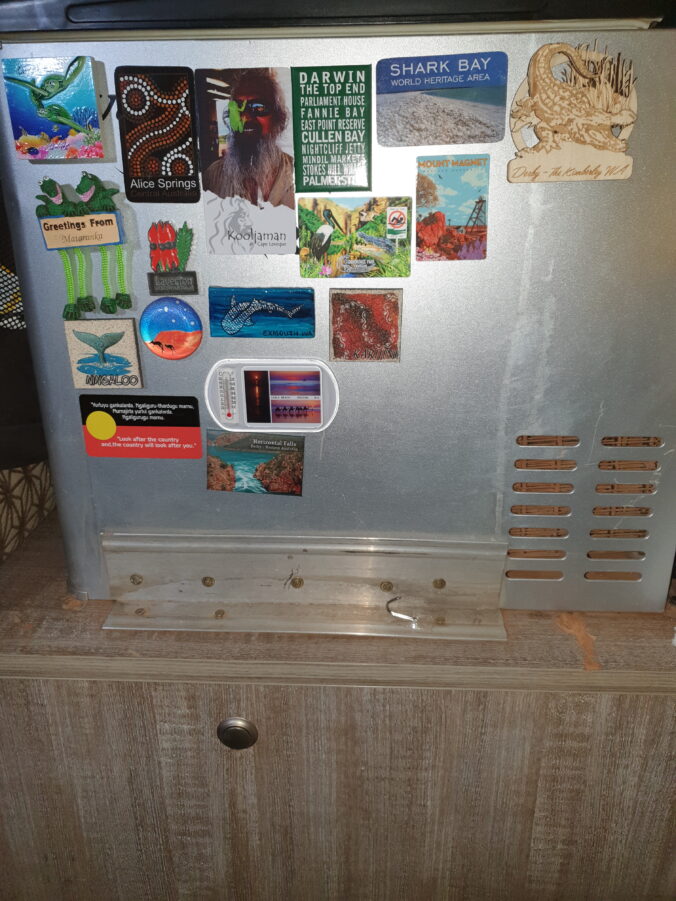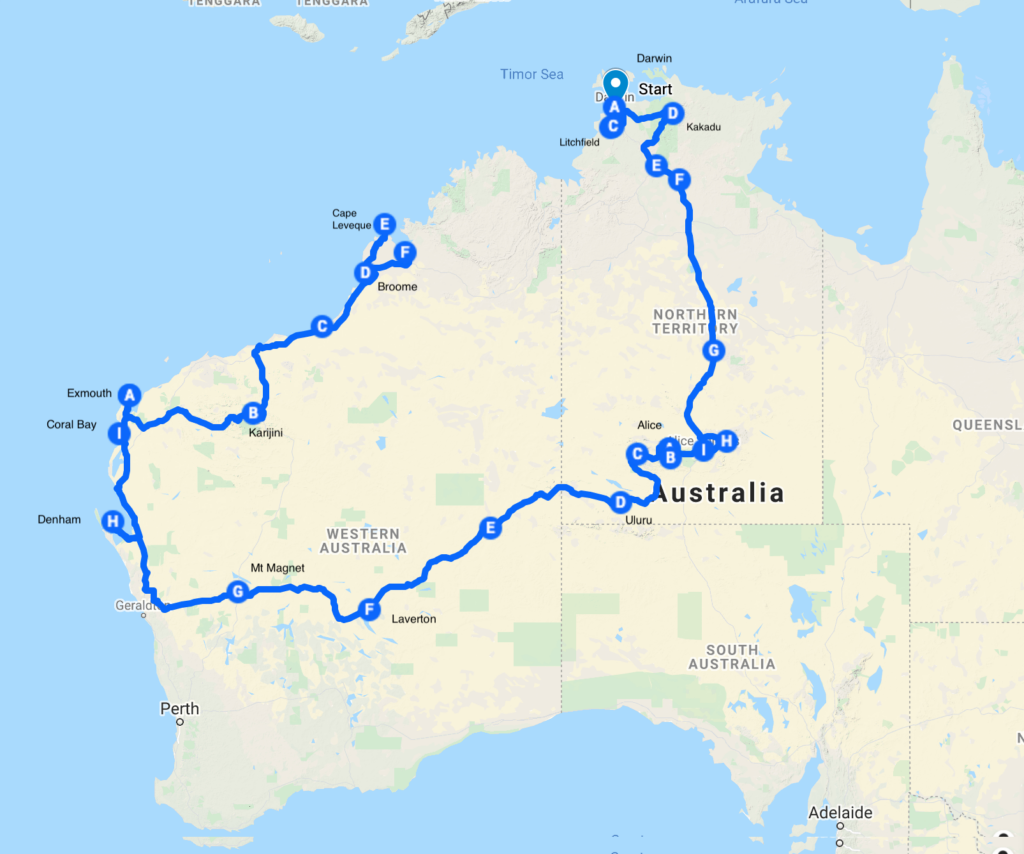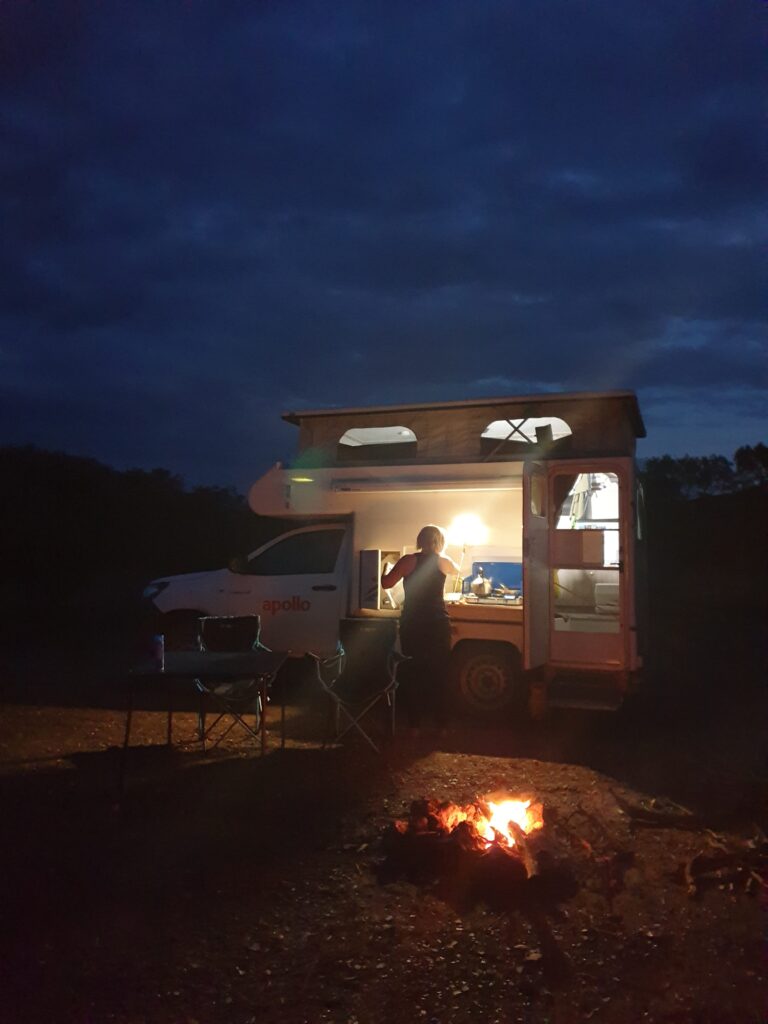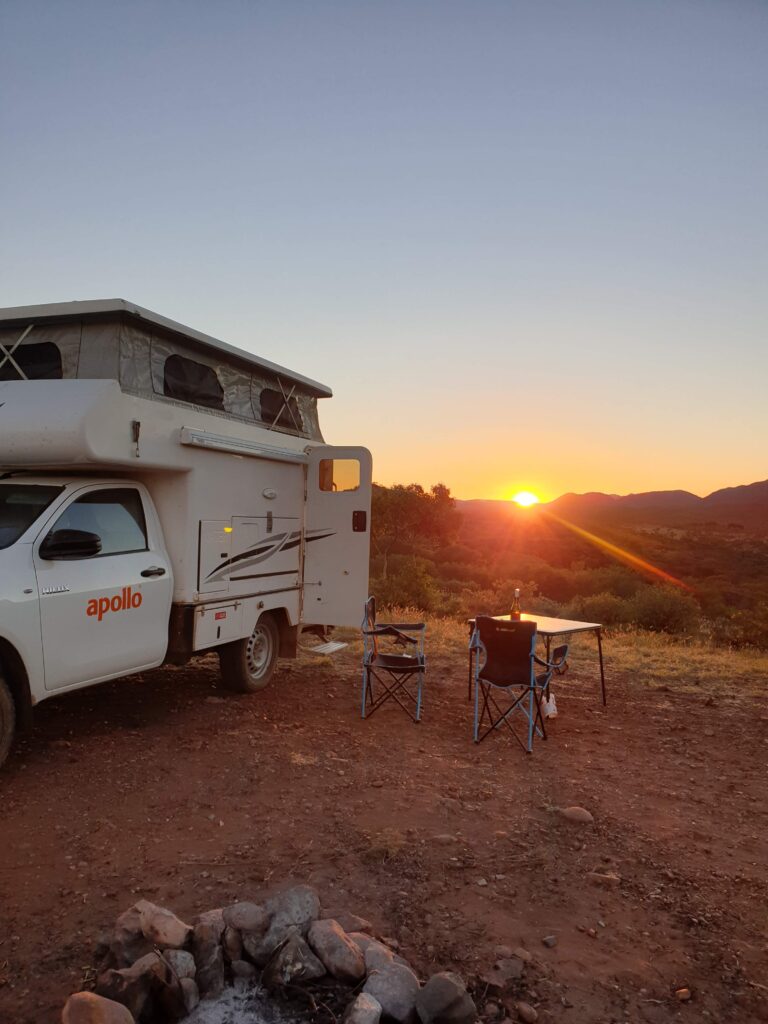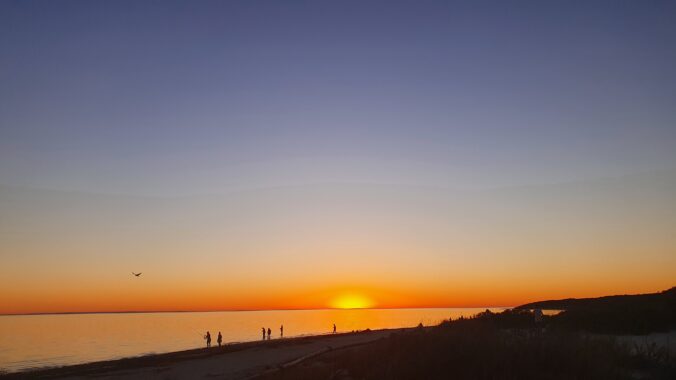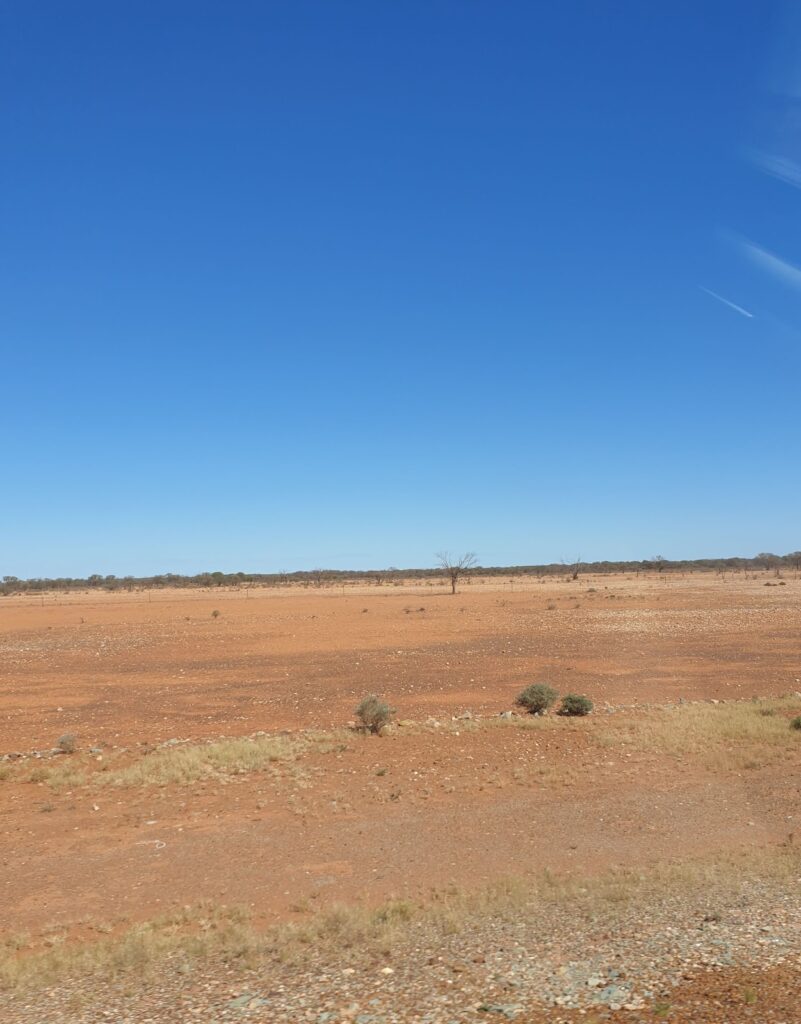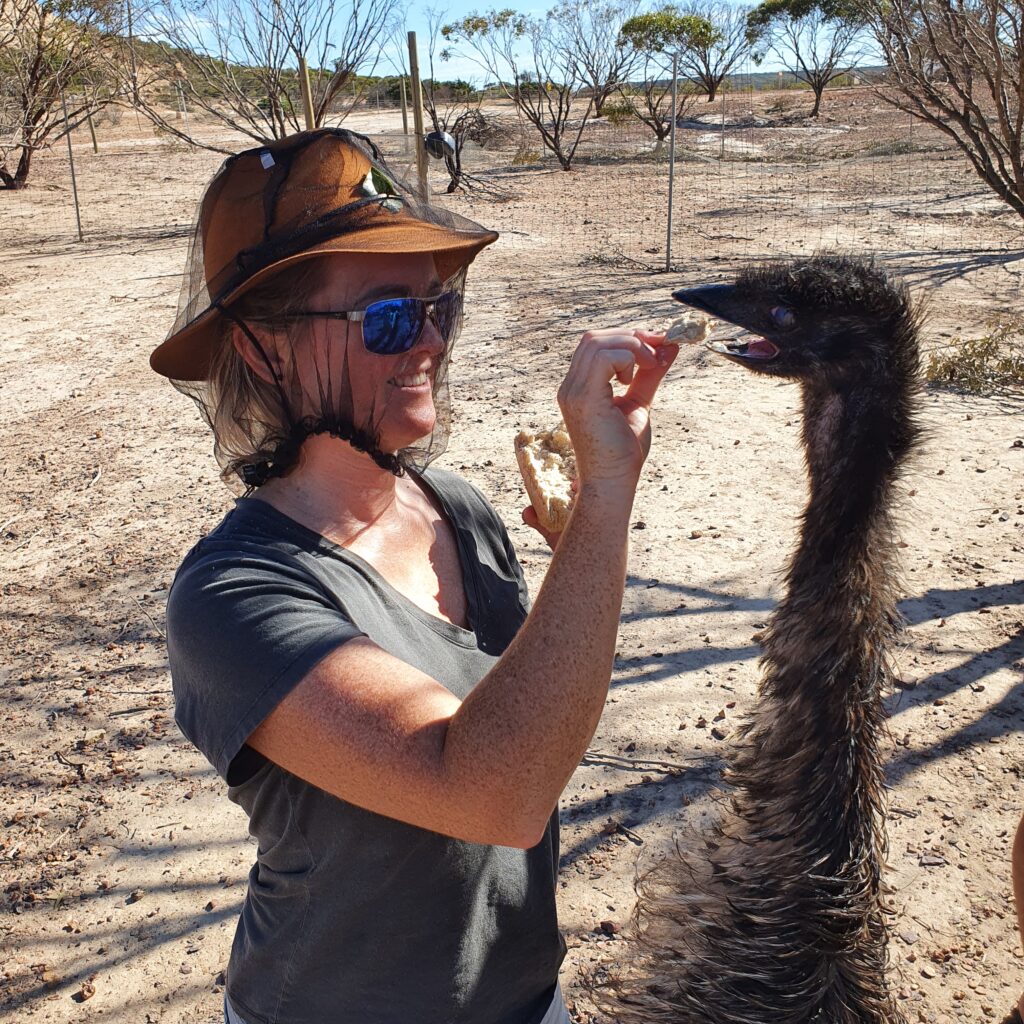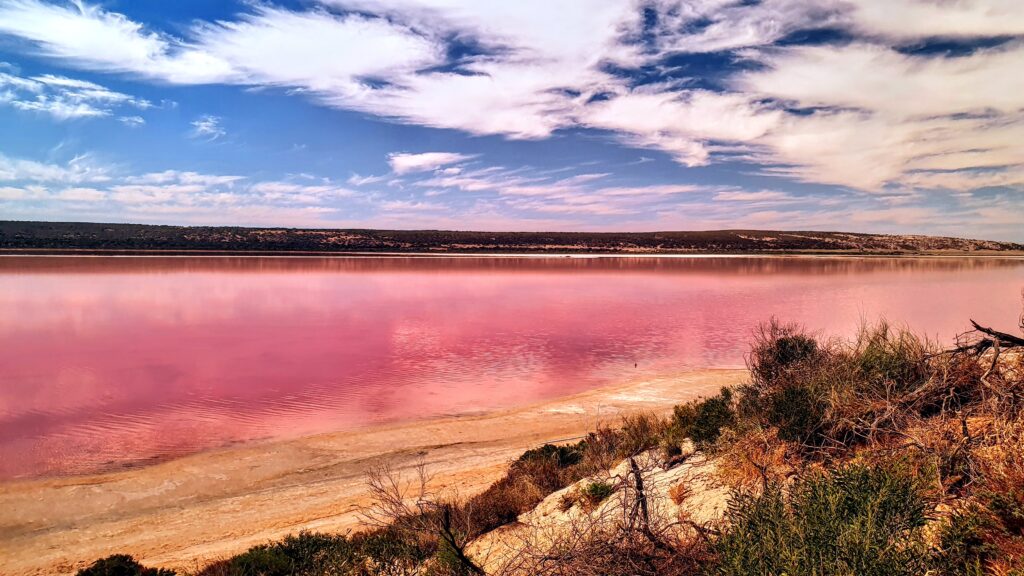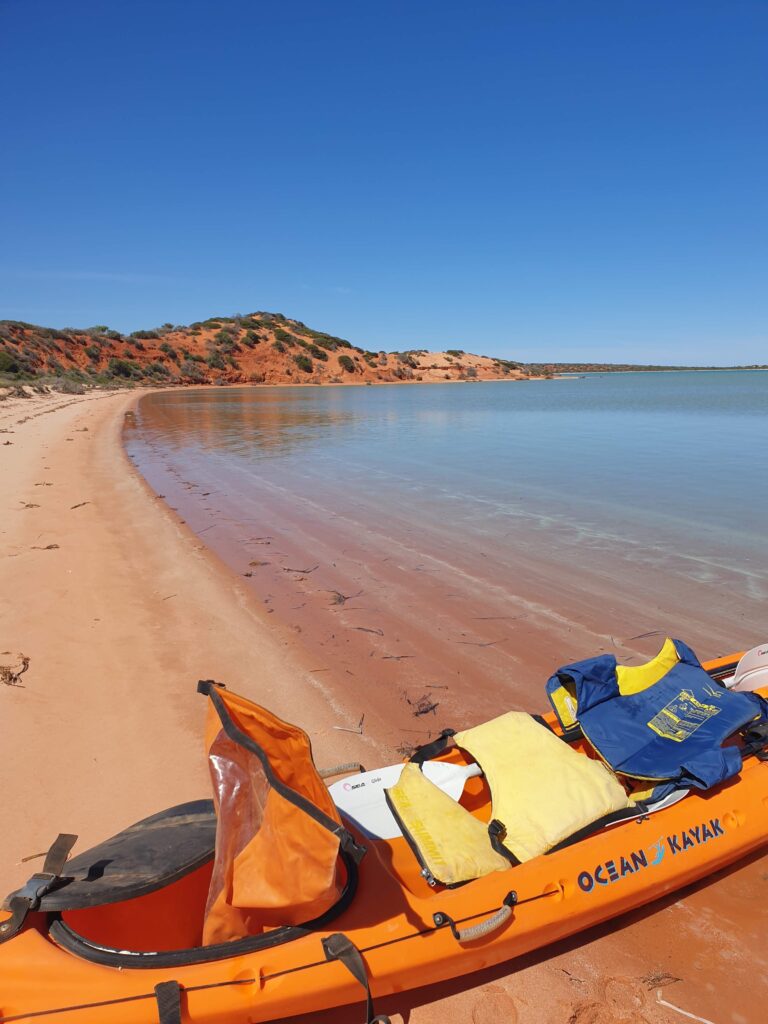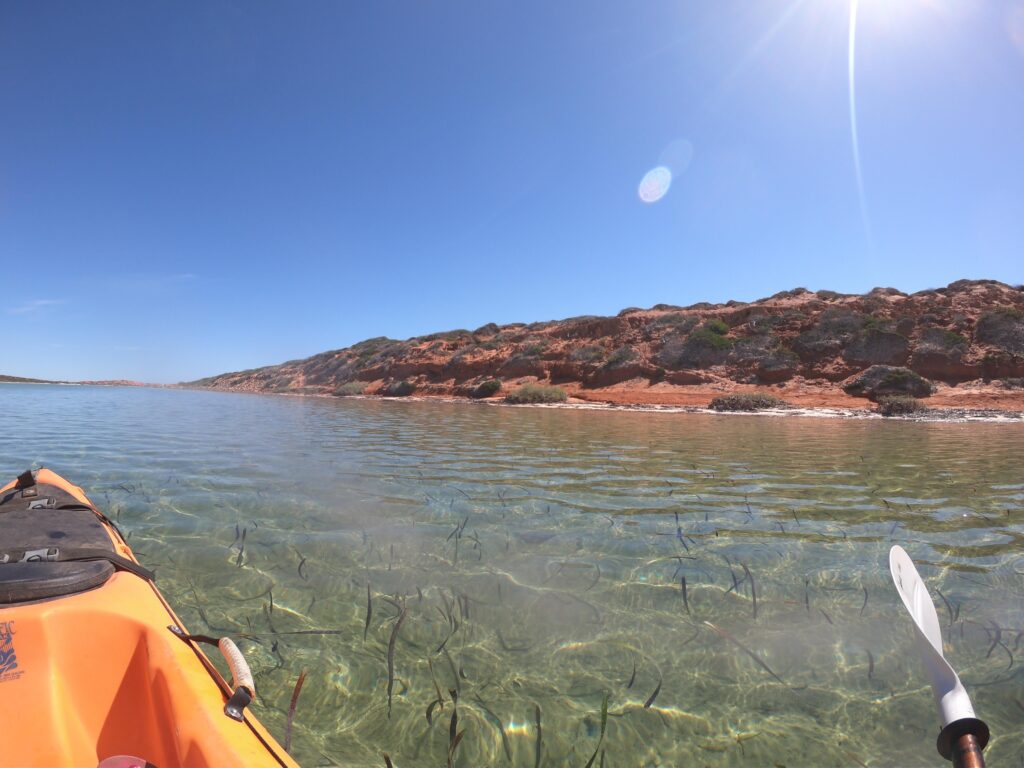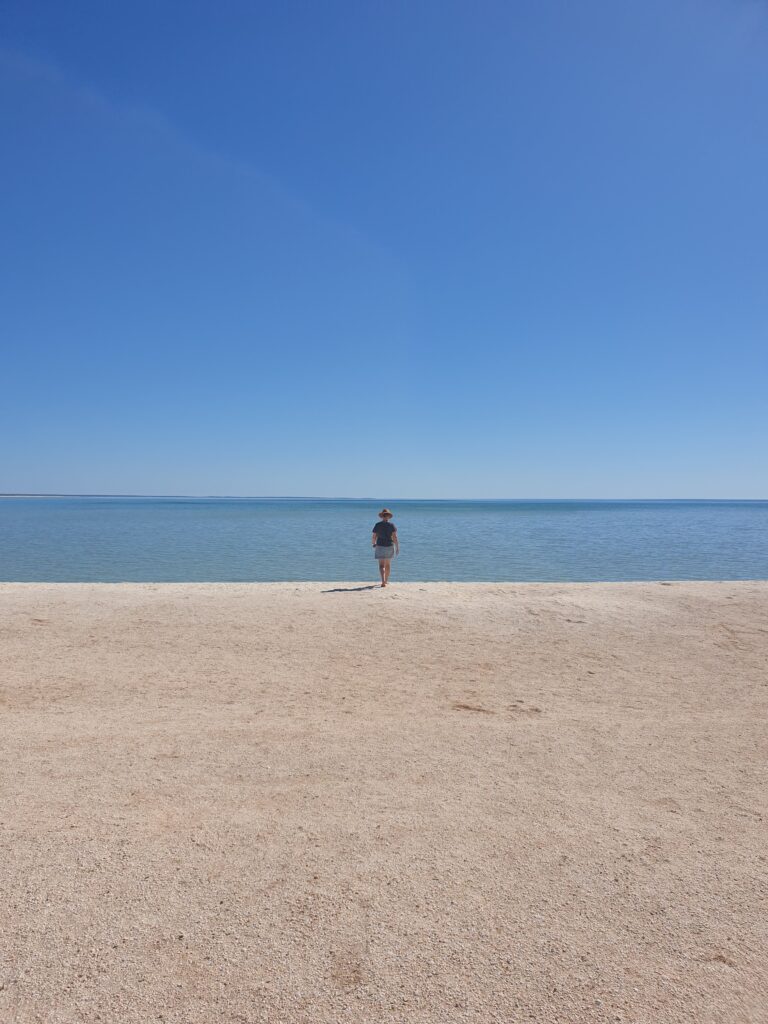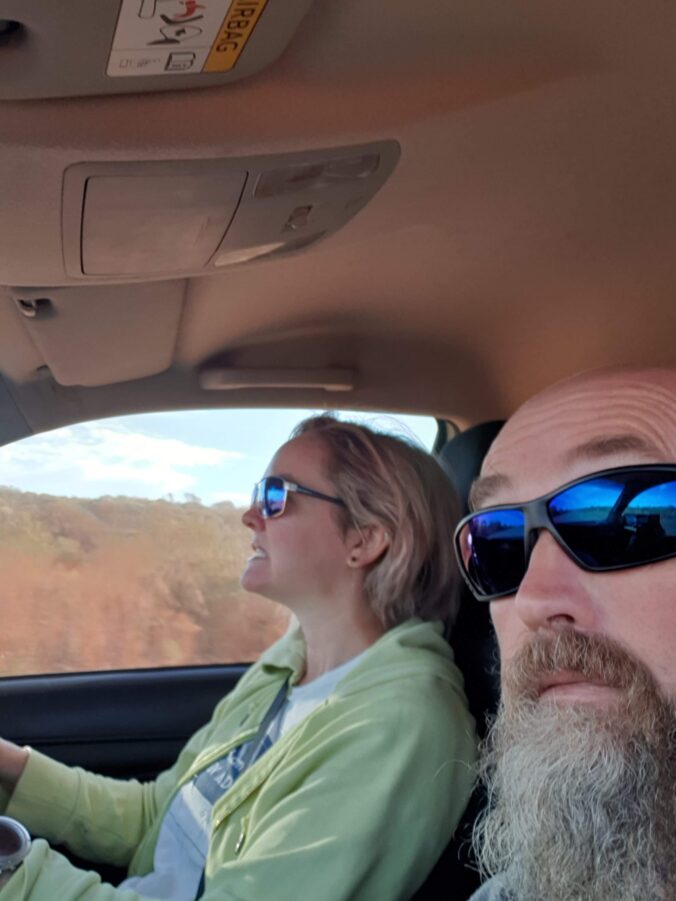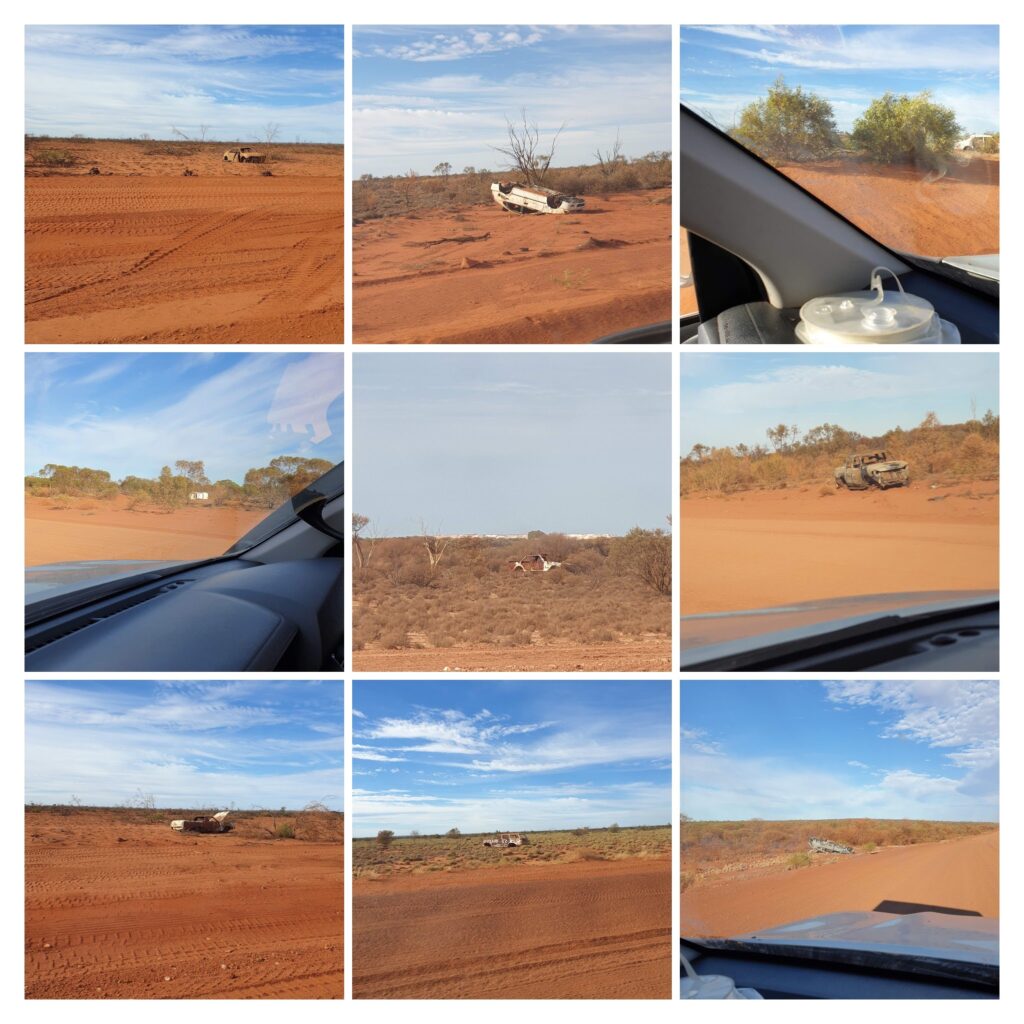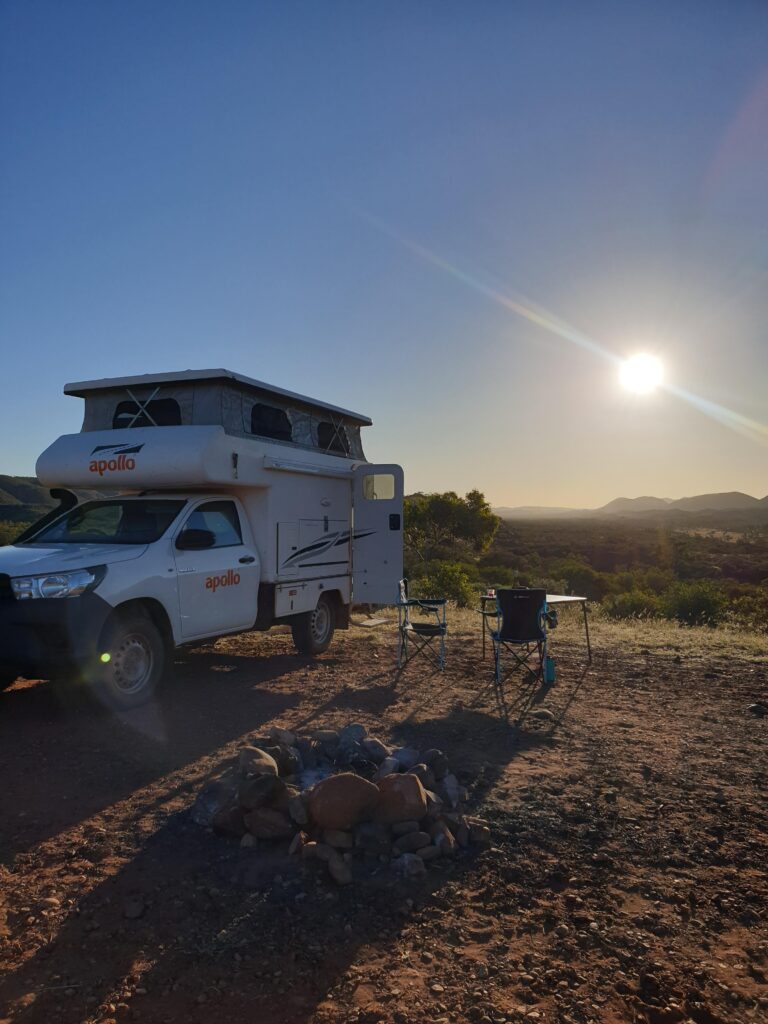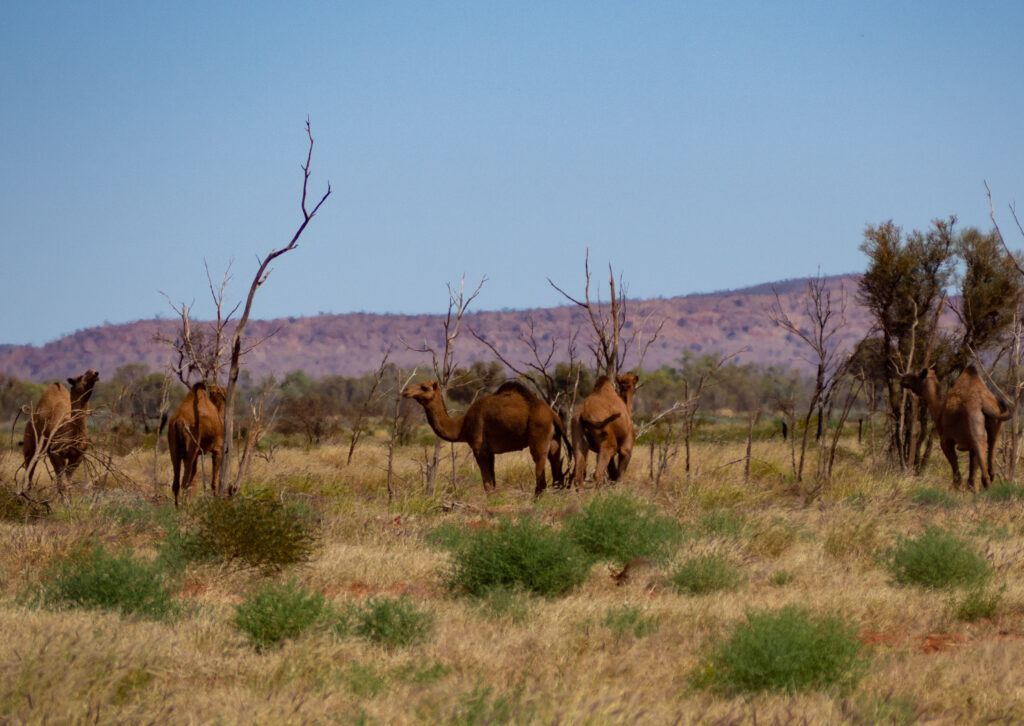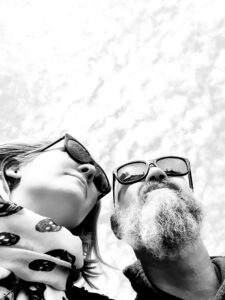
Leaving Lake Argyle we were quickly across the border into the Northern Territory. After a convenient overnight free camp by the road we were on our way through Katherine to Nitmiluk National Park – specifically Edith Falls on the north side of the park. We had stopped here on the way south but it was closed due to excess water, excess crocs, or excess something.
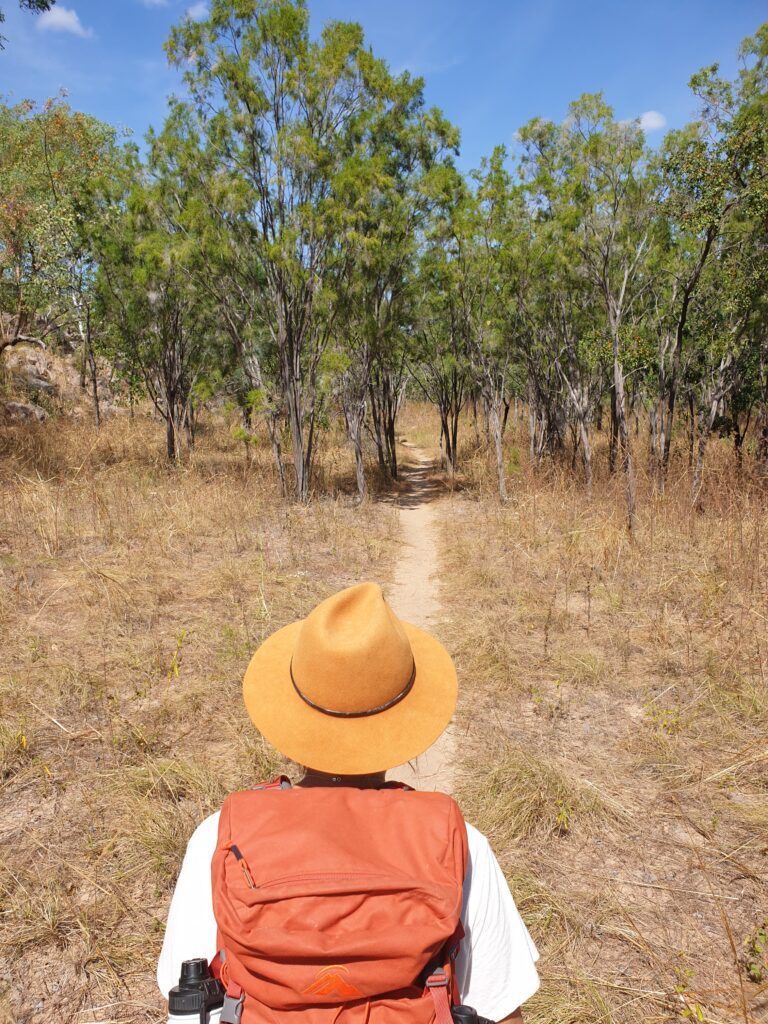
We spent the night at the camp site at the falls, and were pretty excited to do the walk to a waterhole called “Sweetwater Pools” the following day. The walk was only a couple of hours so we enjoyed a leisurely breakfast, before heading off to enjoy the hottest hours of the day. Fresh buffalo (or massive cow) poop on the track indicated possible excitement although we didn’t find one to play with. After reaching Sweetwater Pools, we had a beautiful swim, and decided that we would swim in every other waterhole we had passed on the way up. We managed 3 freshwater dips in crystal clear water on the walk back from Sweetwater Pools, managing to stay wet for the entire trip back despite the best efforts of the midday sun.
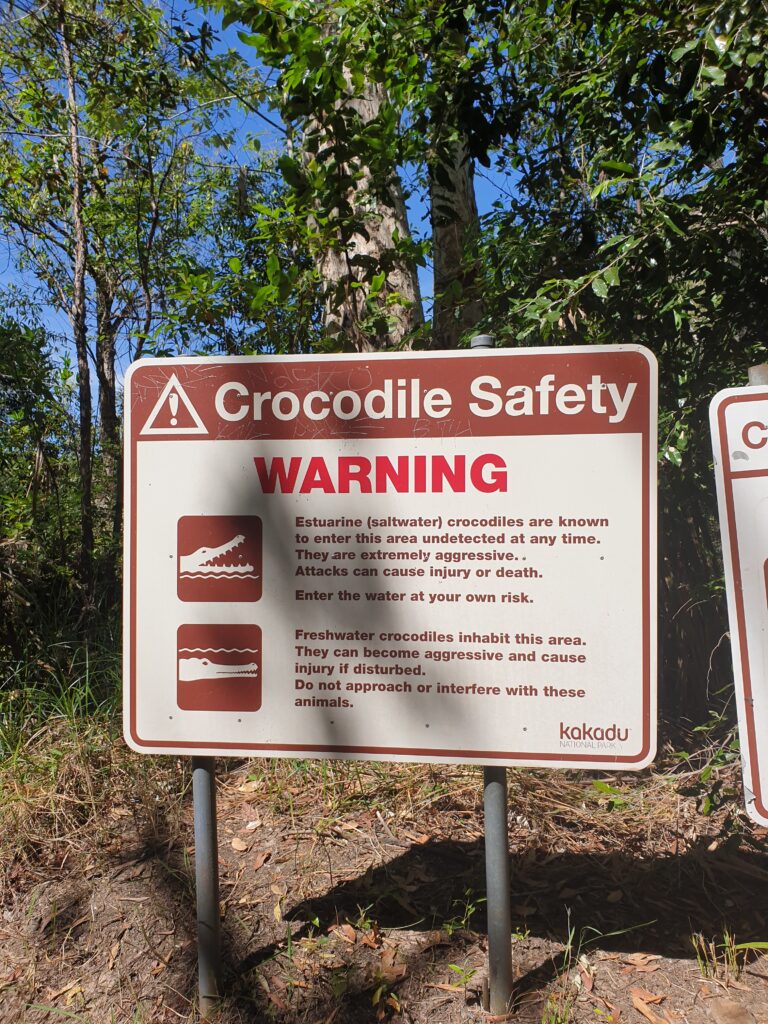
With the number of days available to us dwindling, we had some unfinished business to attend to – Kakadu.
We had run away from Kakadu during the first week of our trip due to excess swarming masses of bugs, excess mosquitos the size of pterodactyls, and excess things being closed. The bugs and mosquitos hadn’t changed apparently, but most of the park was open now.
Our first stop in Kakadu was Maguk campsite conveniently located near another water fall. This sign is amusingly placed just before the path crosses the creek and heads up to the swimming hole.
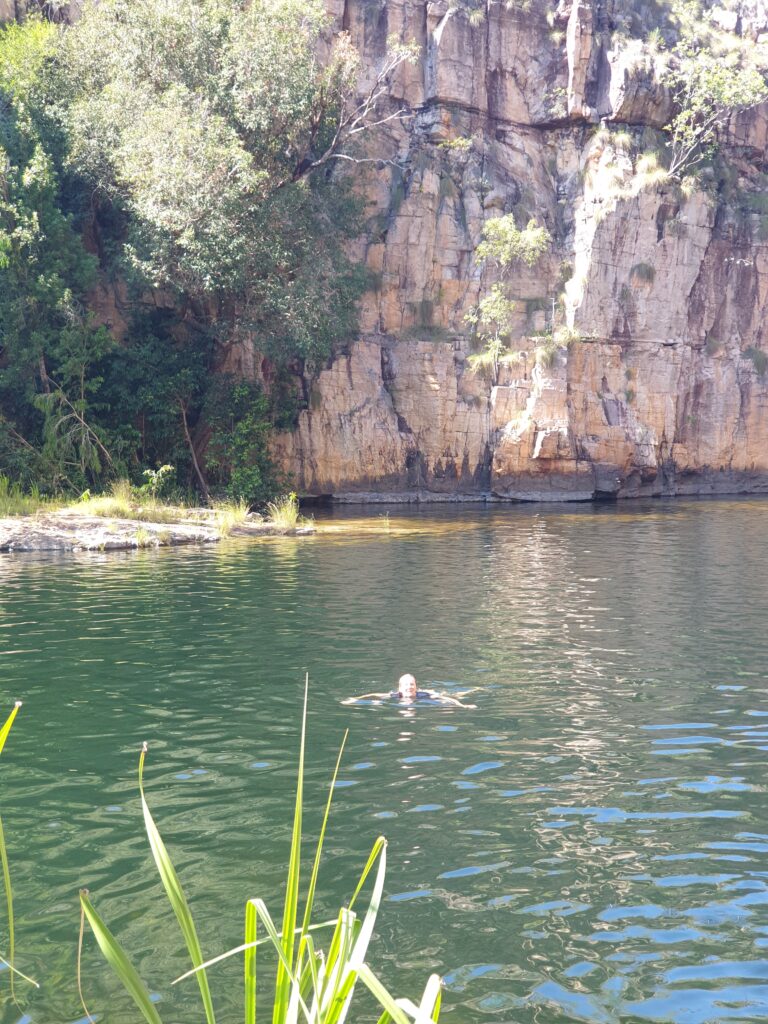
We assumed yummier people had already passed this way so we would not become lunch today. The waterhole was reasonably easily accessed and we had a beautiful reintroduction to Kakadu in the warmest freshwater pool we had been in the whole trip. We could see the bottom many metres below us, and watched the fish check us out.
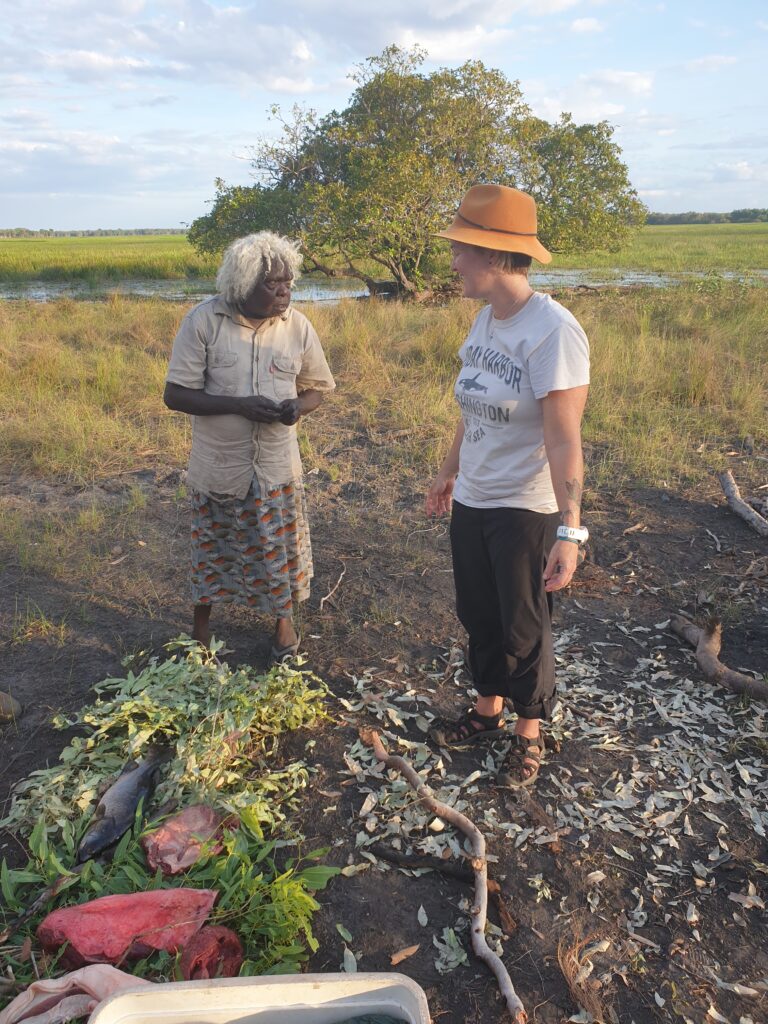
We had a few days planned here, and the lure of collecting and cooking bush tucker with a local guide was enough for us to sign up for the “Animal Tracks” tour located deeper within the park. Its been going for 20 years and still uses the same windowless troop carrier and dishevelled tour guide… We knew we were onto a winner. We picked up Patsy who had lived here all her life, and with her guidance we made baskets, dug for tubers, avoided buffalo, ate green ants (they taste lemon-y and are used as medicine), and turned leaves into string.
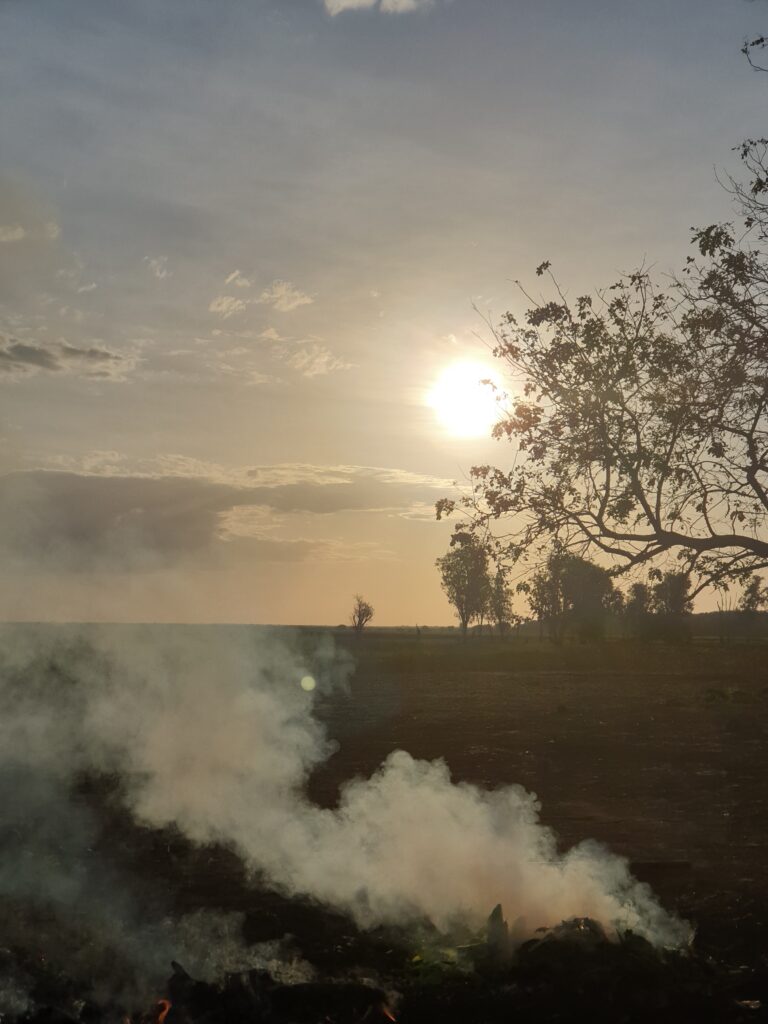
As the sun set over the wetlands, we cooked our dinner on the hot coals in a paperbark and eucalyptus oven. On the menu was fresh tubers we had foraged, wild buffalo, wild pig, and wild freshwater barramundi. Patsy warmed up to all of us and was delightful to spend time with. We watched the sun set, and the pterodactyls rise, and skedaddled off back to our camp, swerving to miss the 2m long olive pythons that like to warm up on the road at night soaking up the last warmth of the sun from the tarmac.
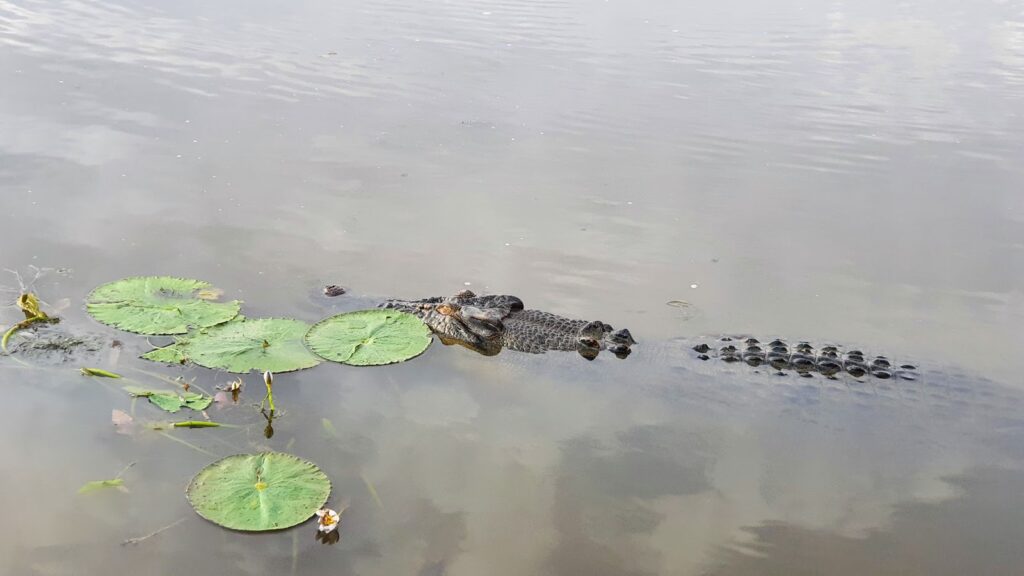
Our final night in this wild park was spent on a river cruise at Yellow water near our campsite. The pterodactyls don’t come out until after the sun has set (unlike in other places where they come out at dusk, or just stay all day) and so we felt safe to be out and about at this time. The cruise took us through the wetlands, and is primarily used to educate tourists on the fragility of the environment, and the uniqueness and importance of this park. It was wonderful to see the wetlands from this vantage point, and we were fortunate to see a lot of crocodiles! These are esturine (or salt water) crocodiles and are definitely a danger to humans, so we stayed safely within the boat.
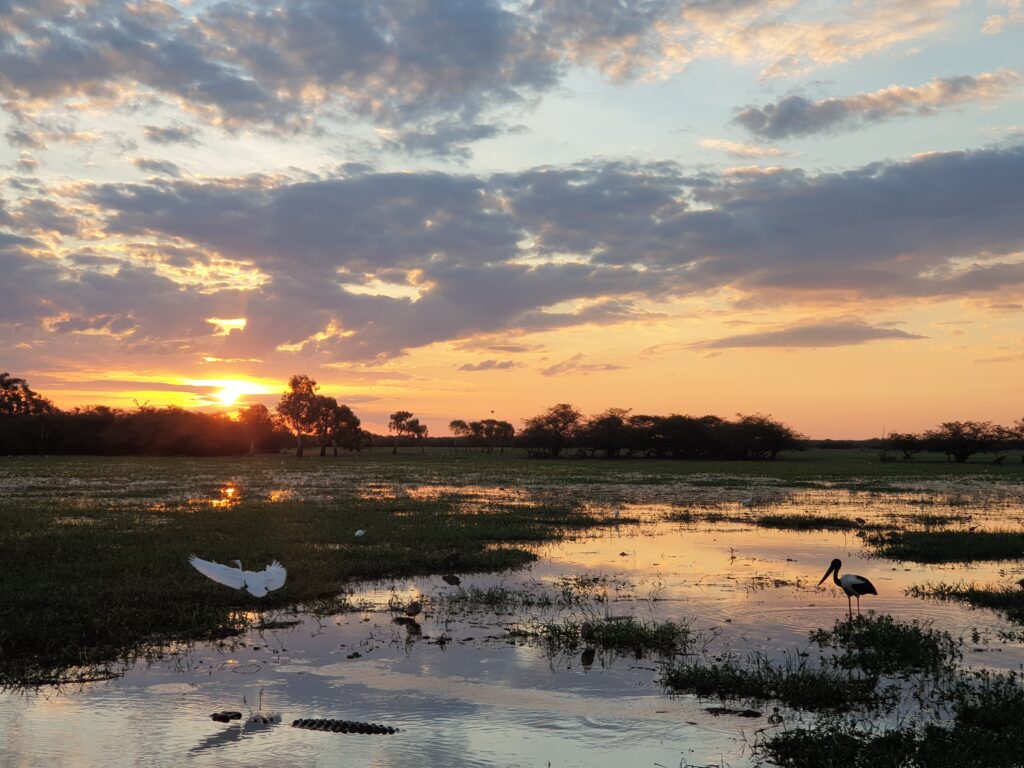
A couple of days later, while relaxing by the pool at our hotel in Darwin, we were reminded of this magic sunset cruise. A tall, daringly tanned, rotund gentleman explained to his friends, rather too loudly, that Kakadu was not the place to see wildlife. We recalled the sunset cruise, and the moment we were surrounded by half a dozen salt water crocodiles a few metres away snapping at passing fish, jabirus (AKA black necked storks) sorting out squabbling geese whilst other wading birds watched on, sea eagles returning to their nest as wild pigs and buffalo crossed the wetlands. Hmm, no wildlife.
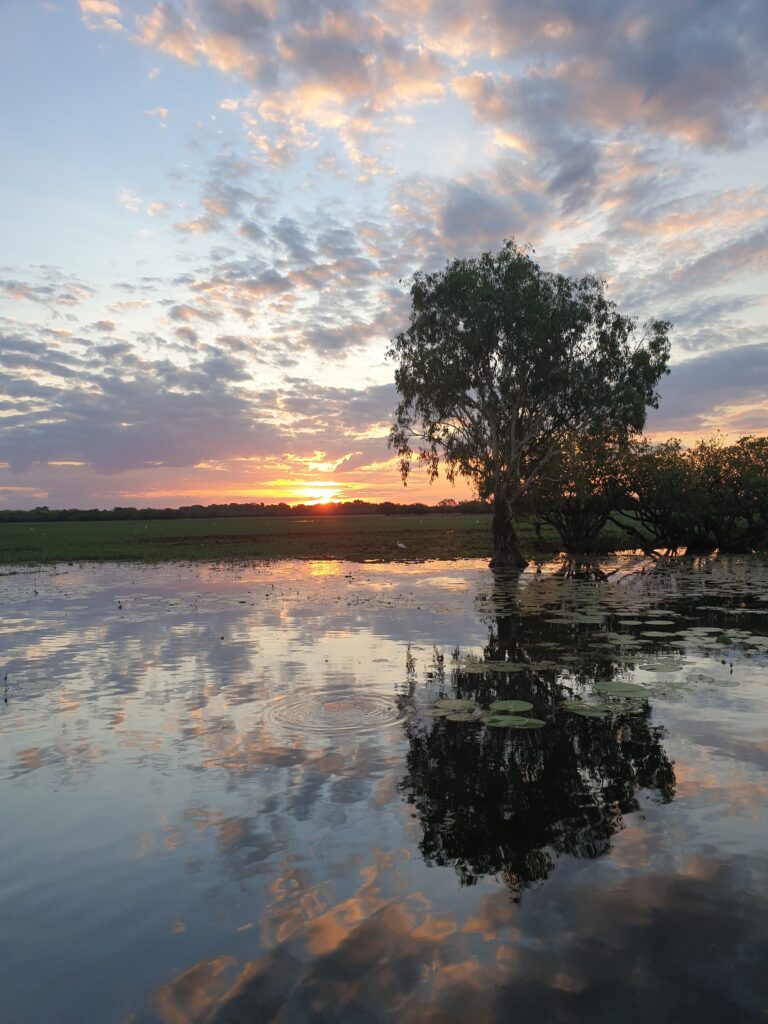
After 13000 km our outback trip was fading into another fiery Kakadu sunset. The rumble of the swag carrying V8 Land Cruisers had been diluted by the hum of soft roaders. The 4WD outback buses full of adventure seeking back packers had been replaced by luxury coaches spewing clean, perfumed, white shirts and sun hats on day trips from Darwin. Attentive tour guides rushed wheelchairs to those overcome by the few hundred metres stroll to todays instagramable shot.
We had for a moment become the red dirt gypsies seeking the road less travelled, shunning mass tourism and the trappings of a city life. Our dusty feet may eventually wash clean but it will take longer than we expect to slip back into our latte sipping inner city life and prepare for new adventures… Which are now not far Away.
